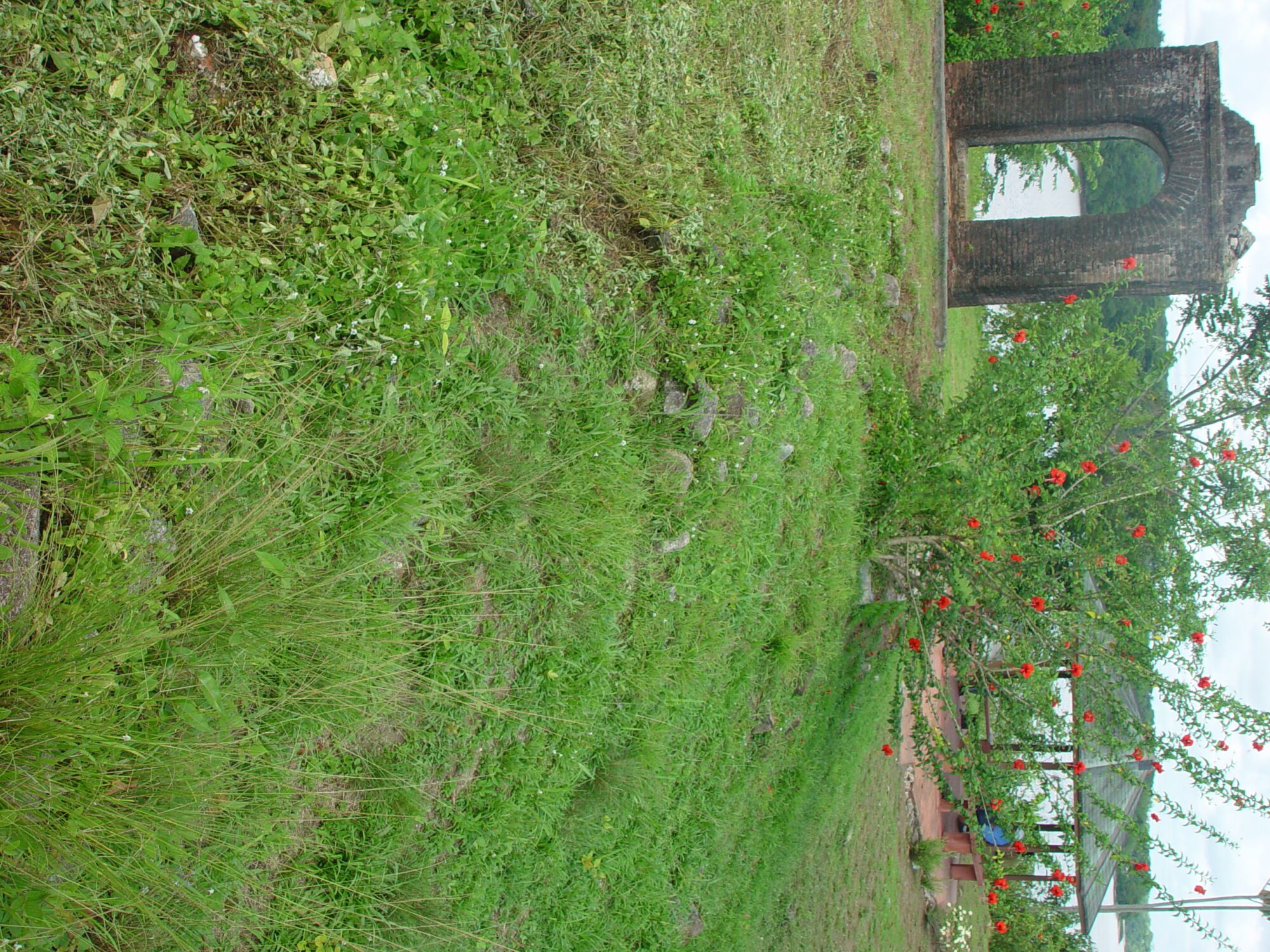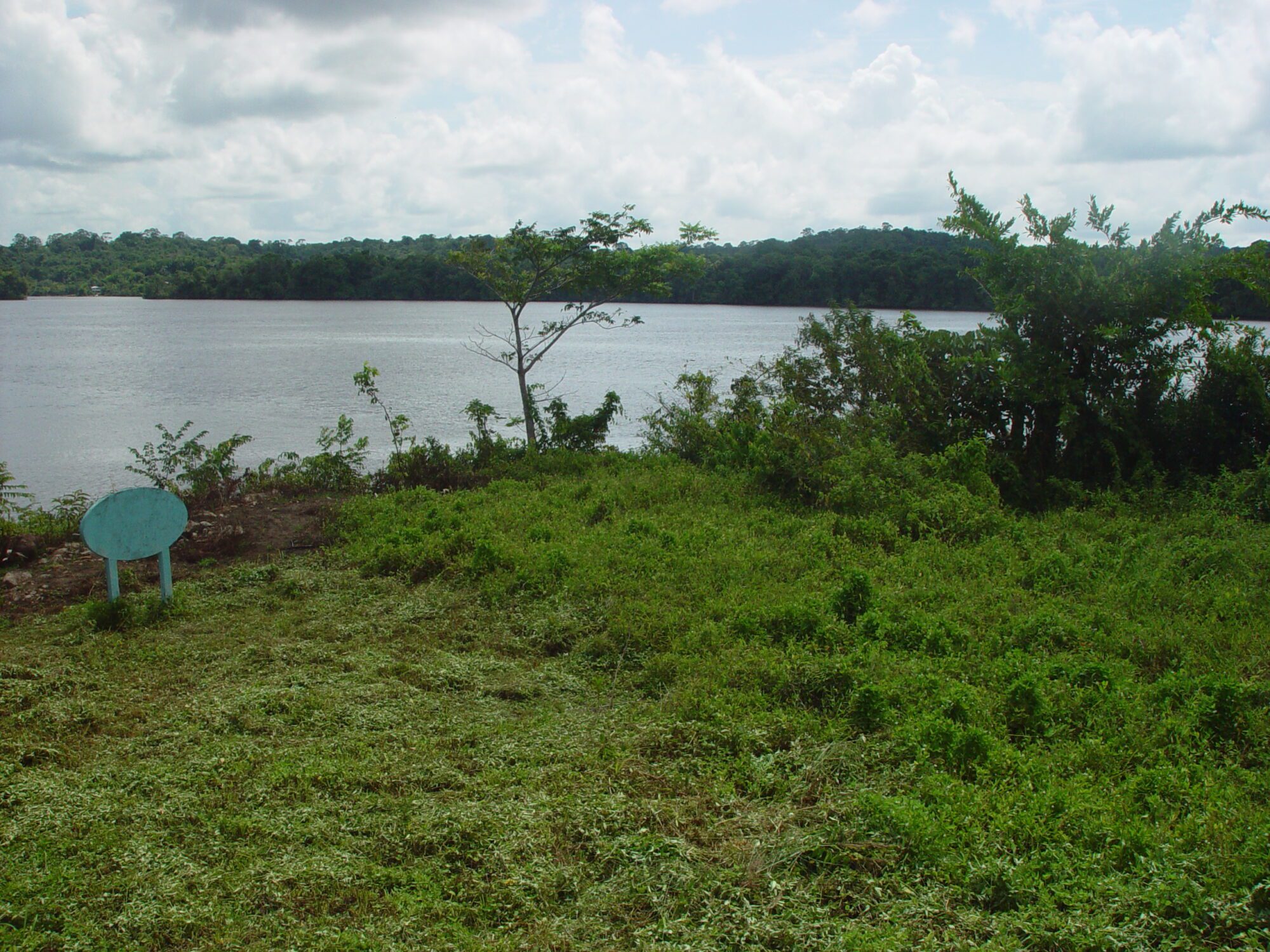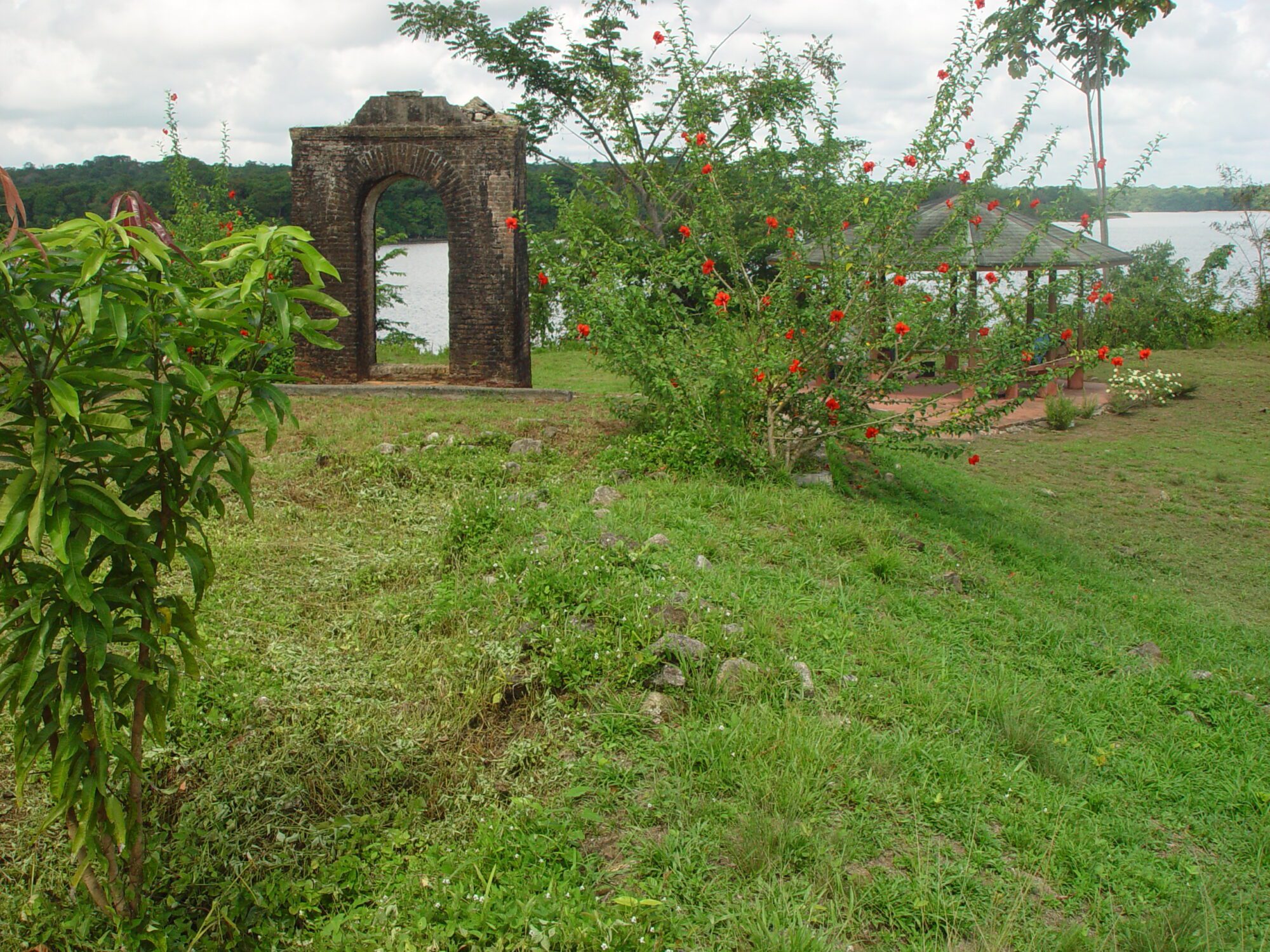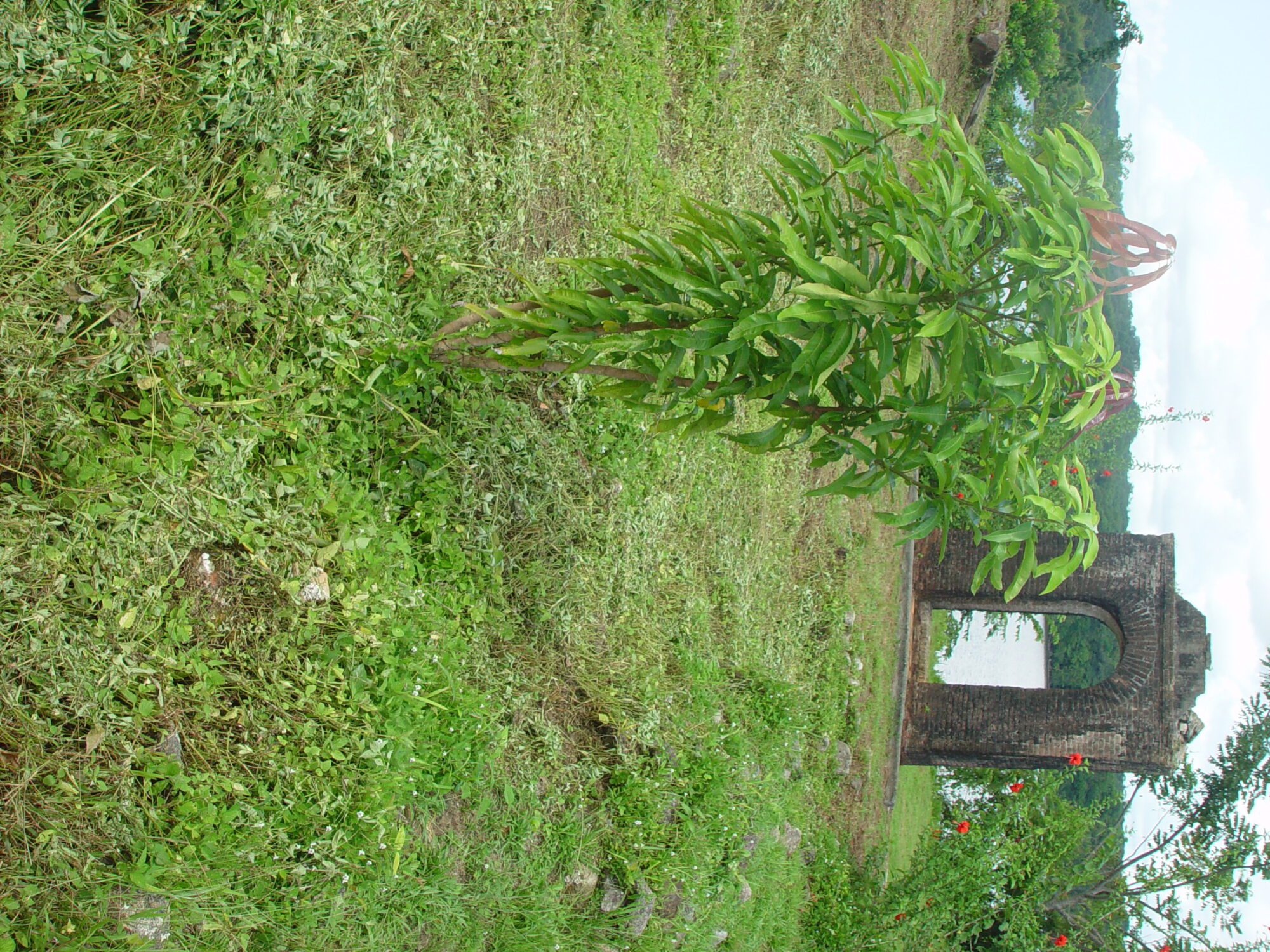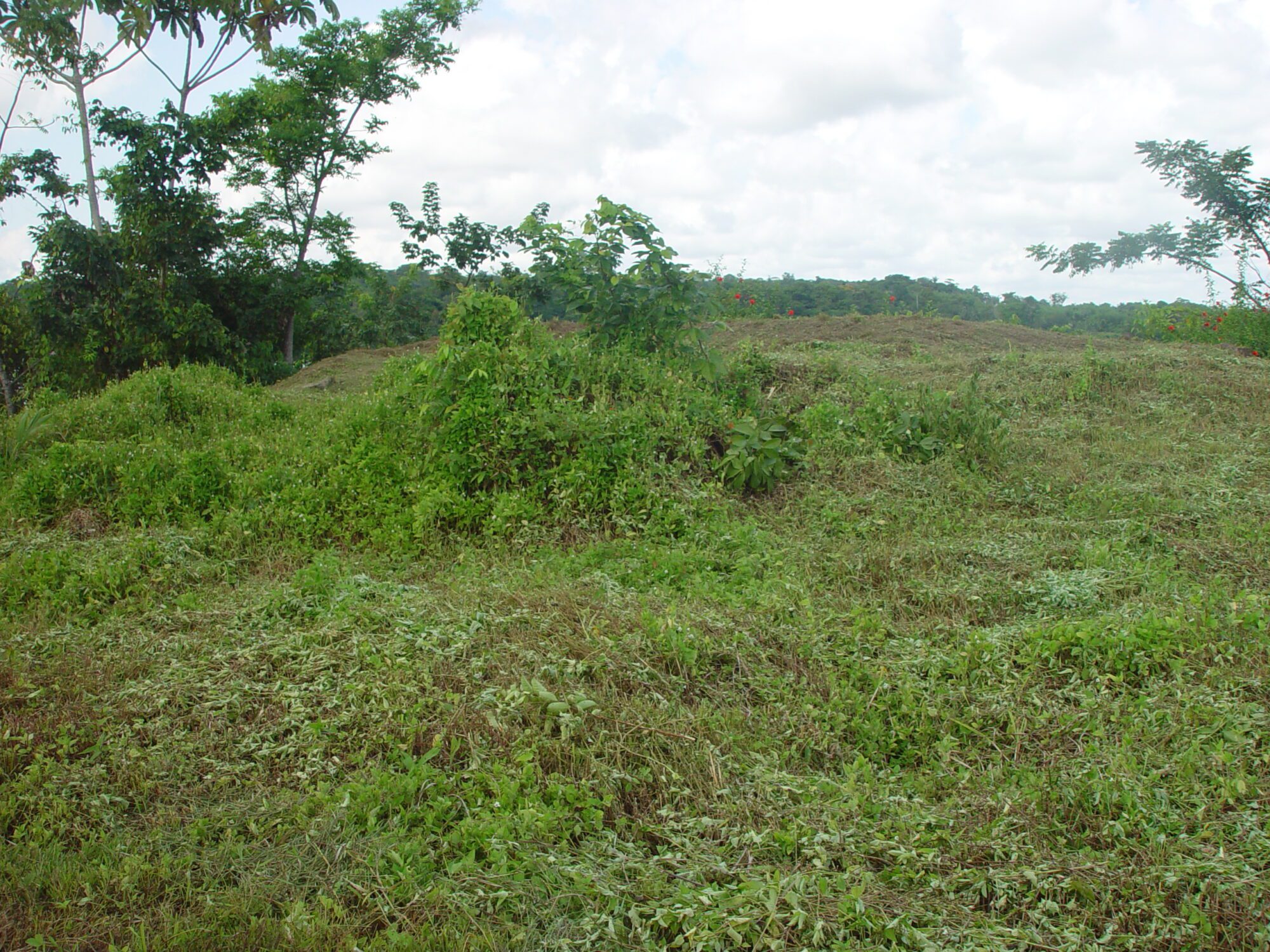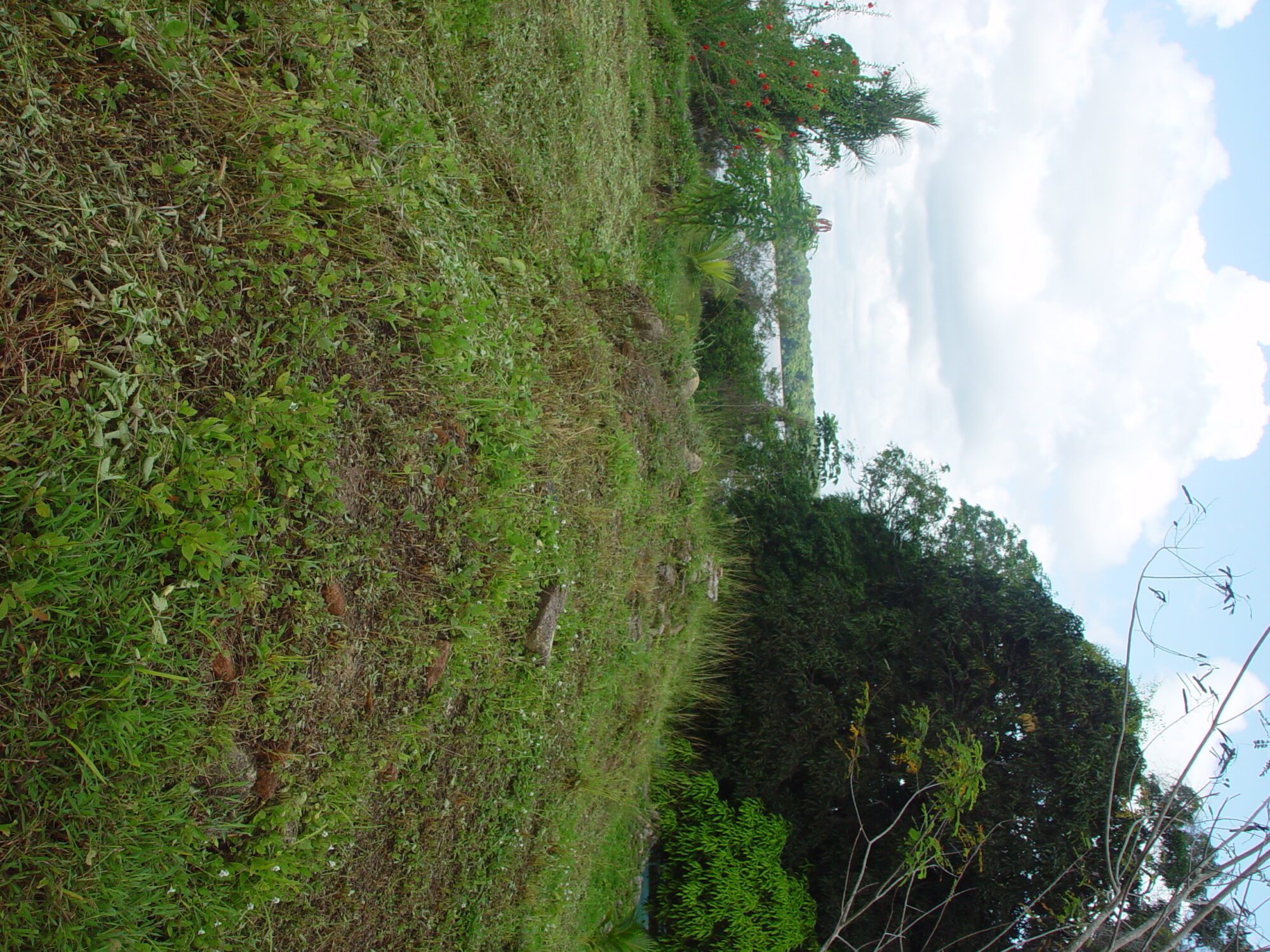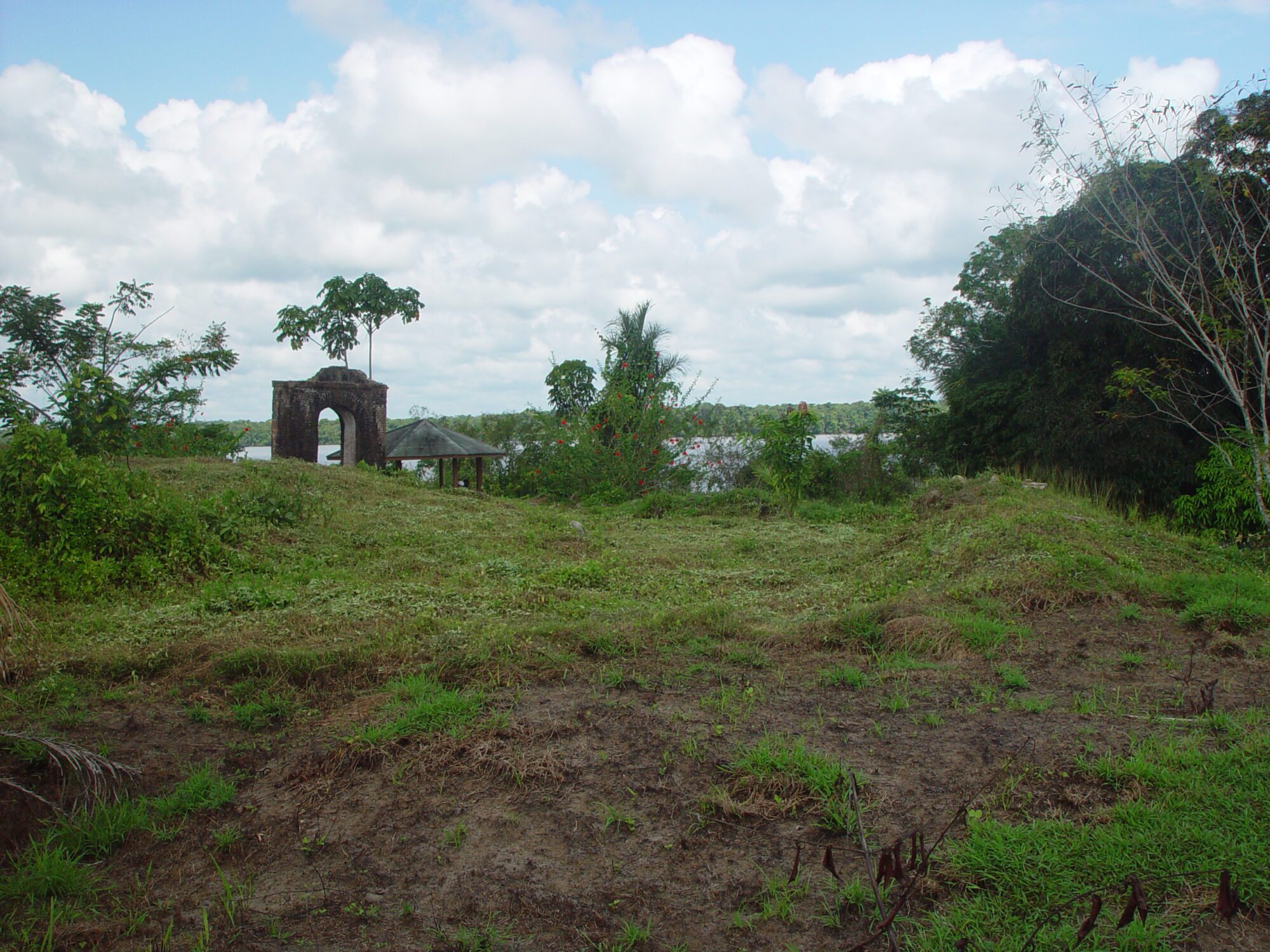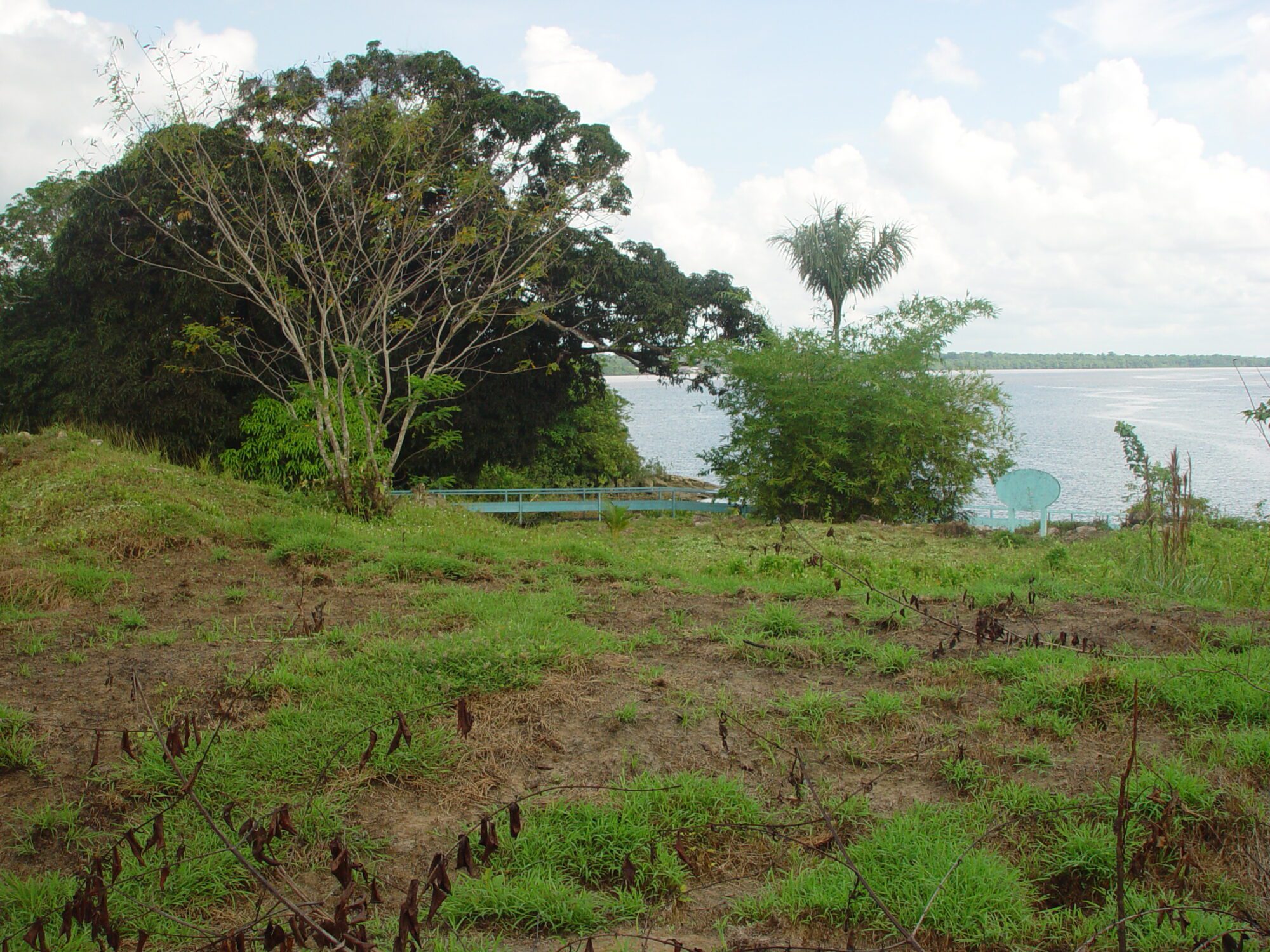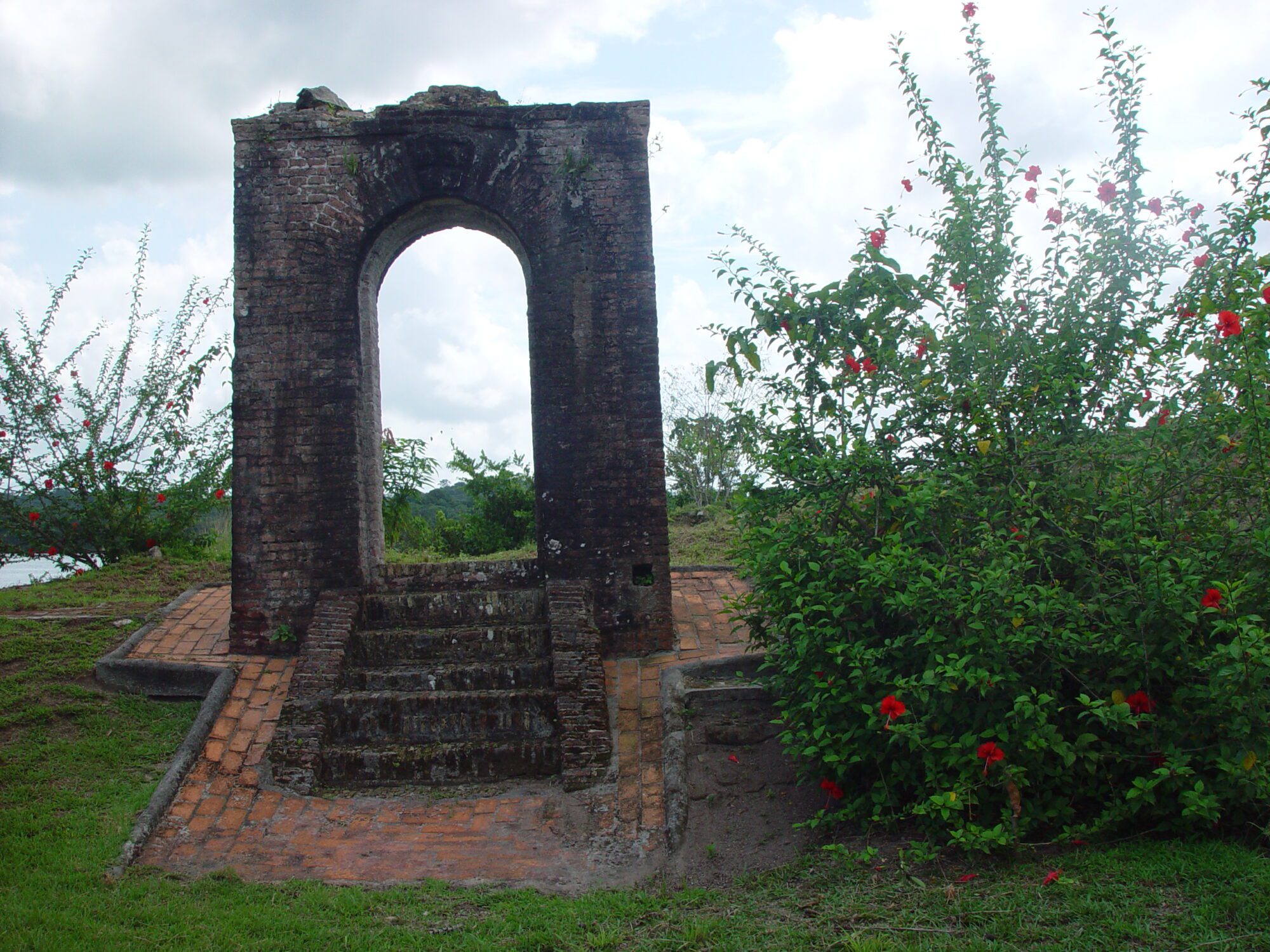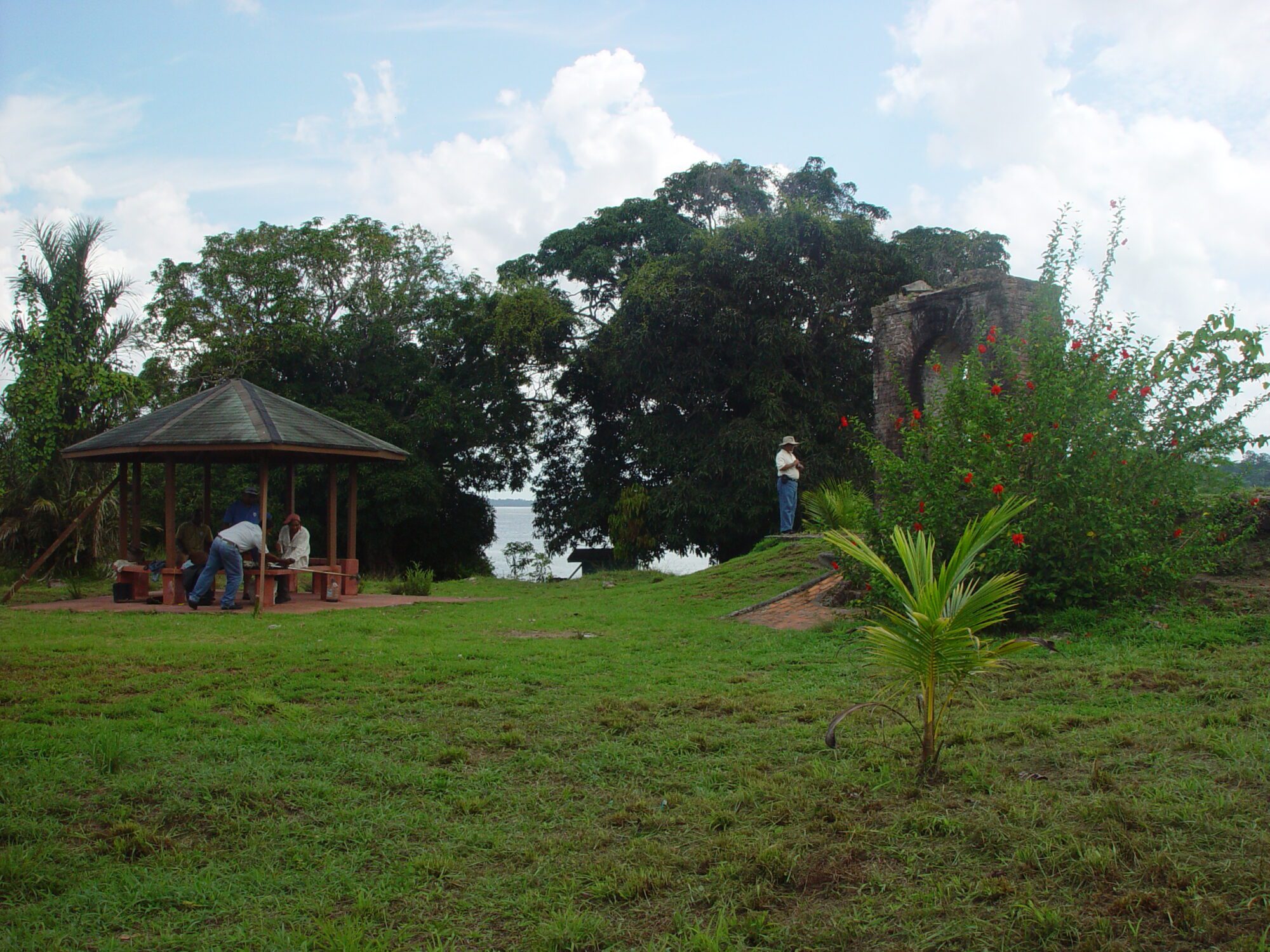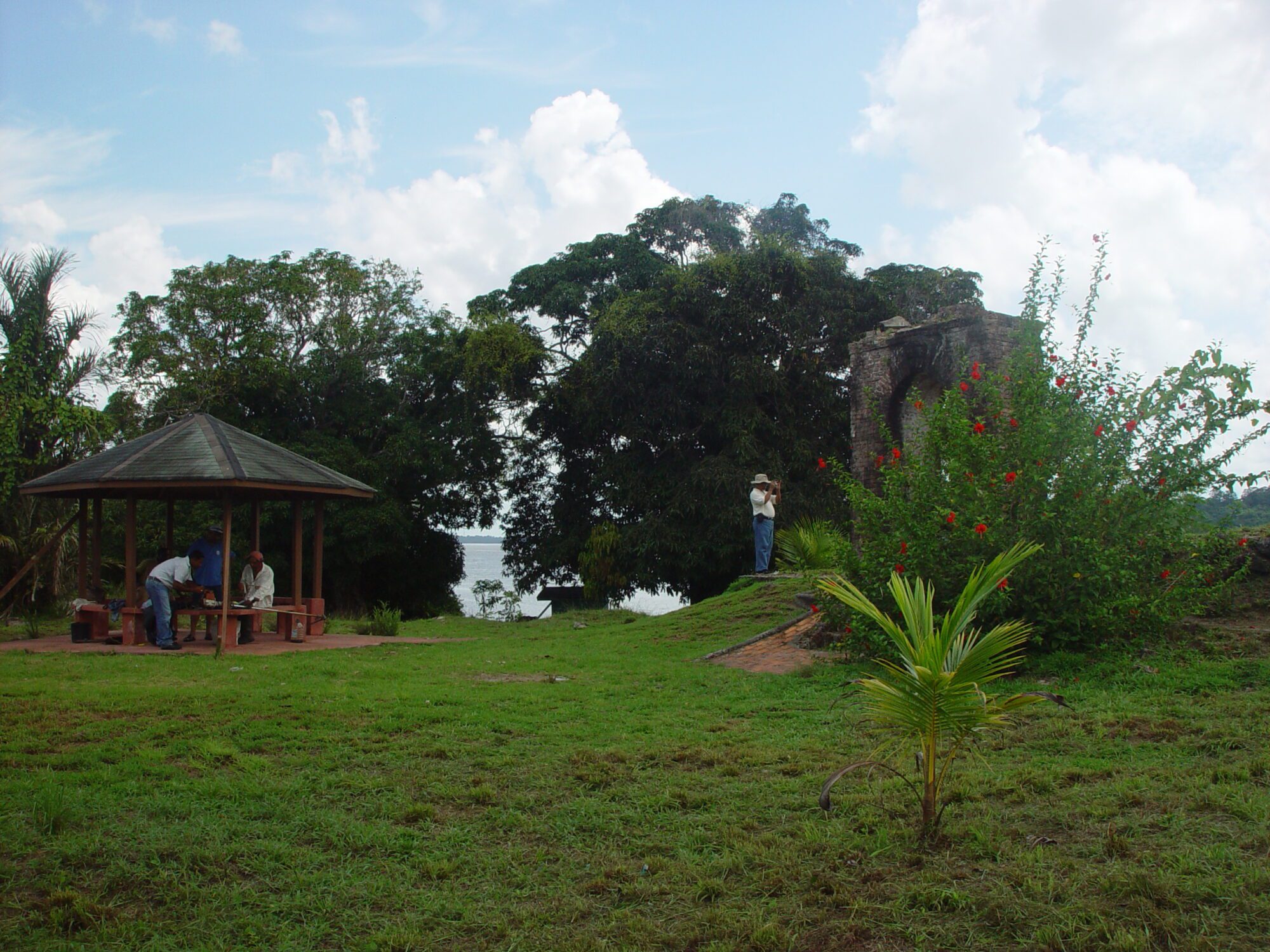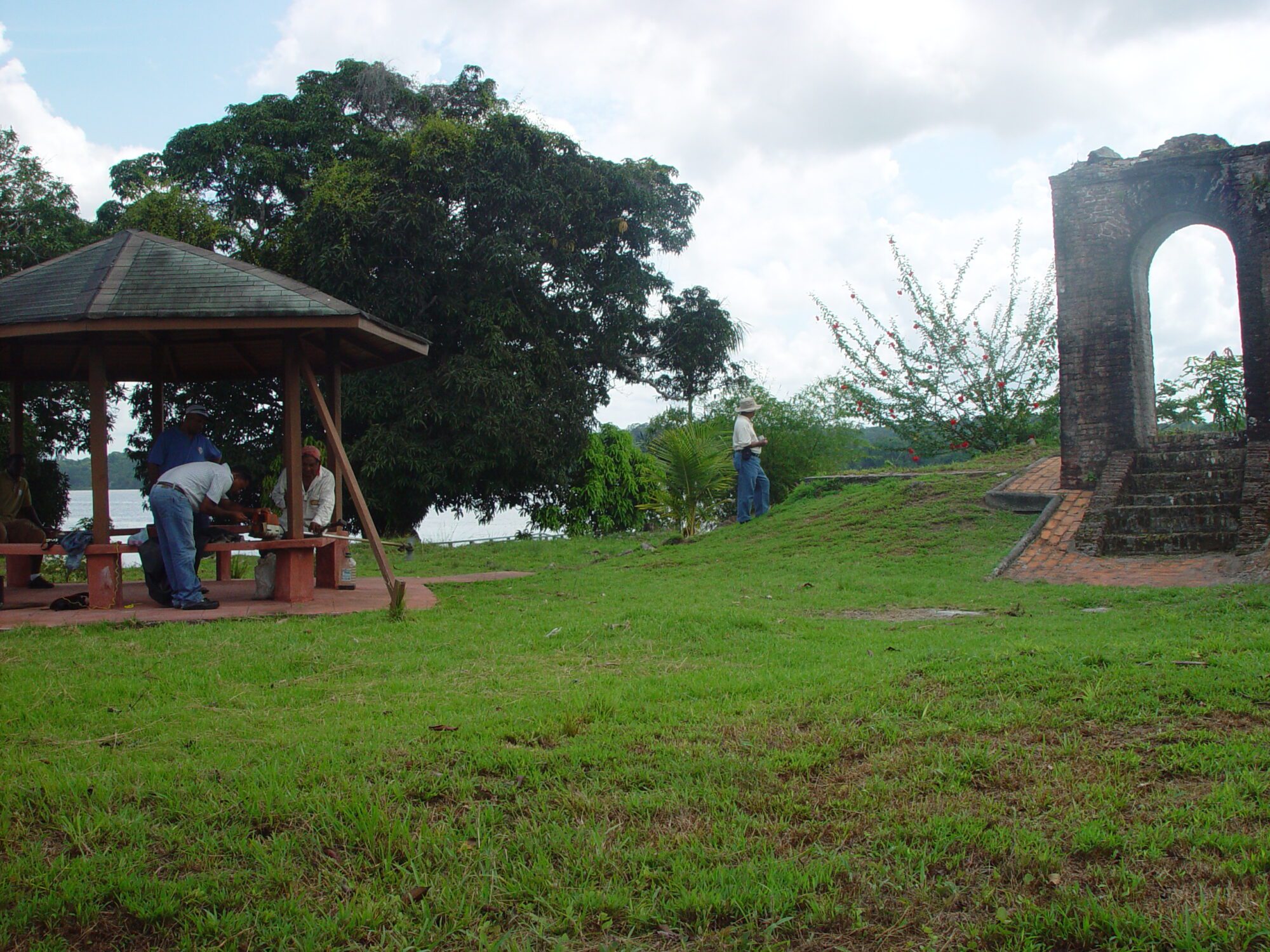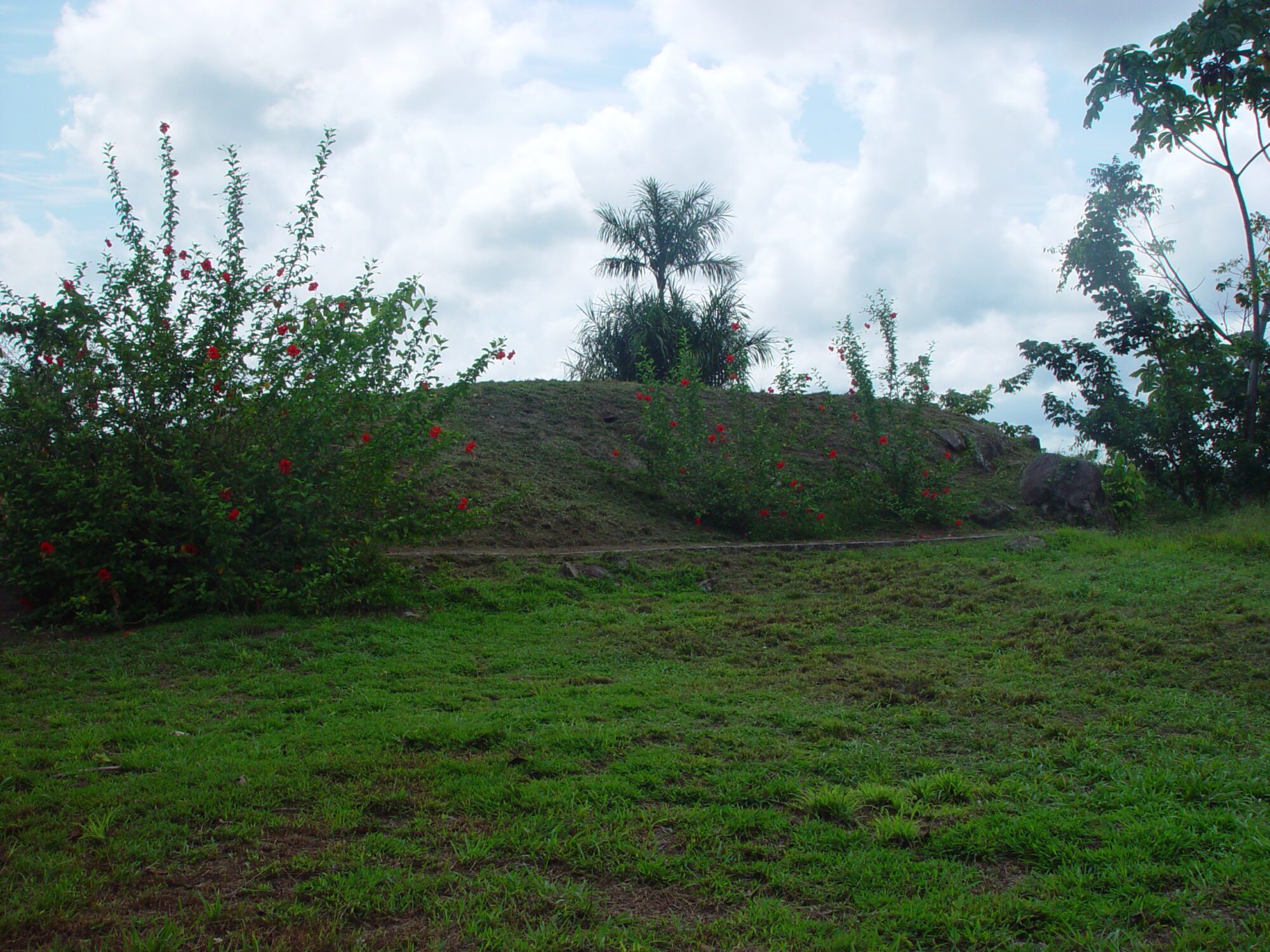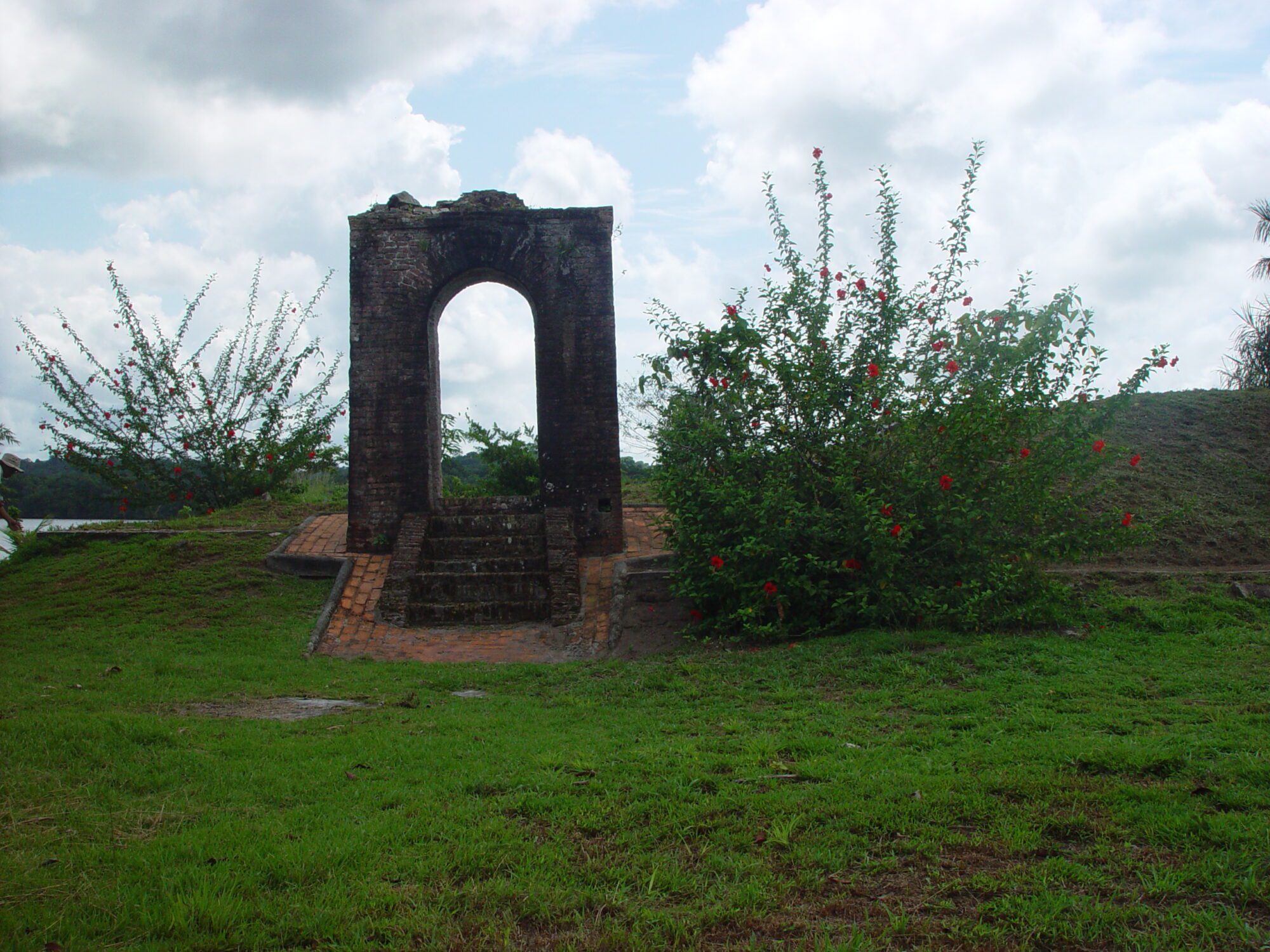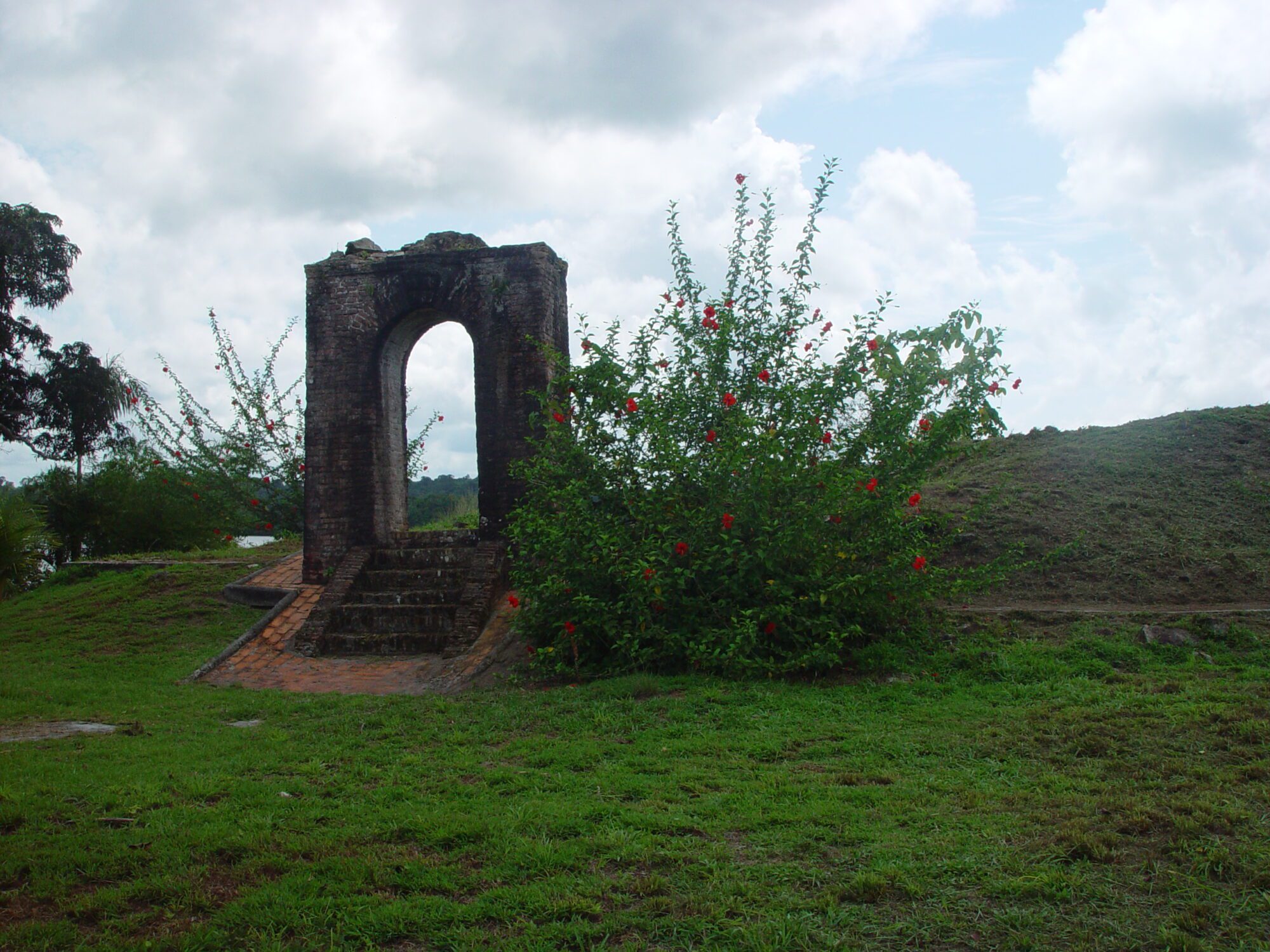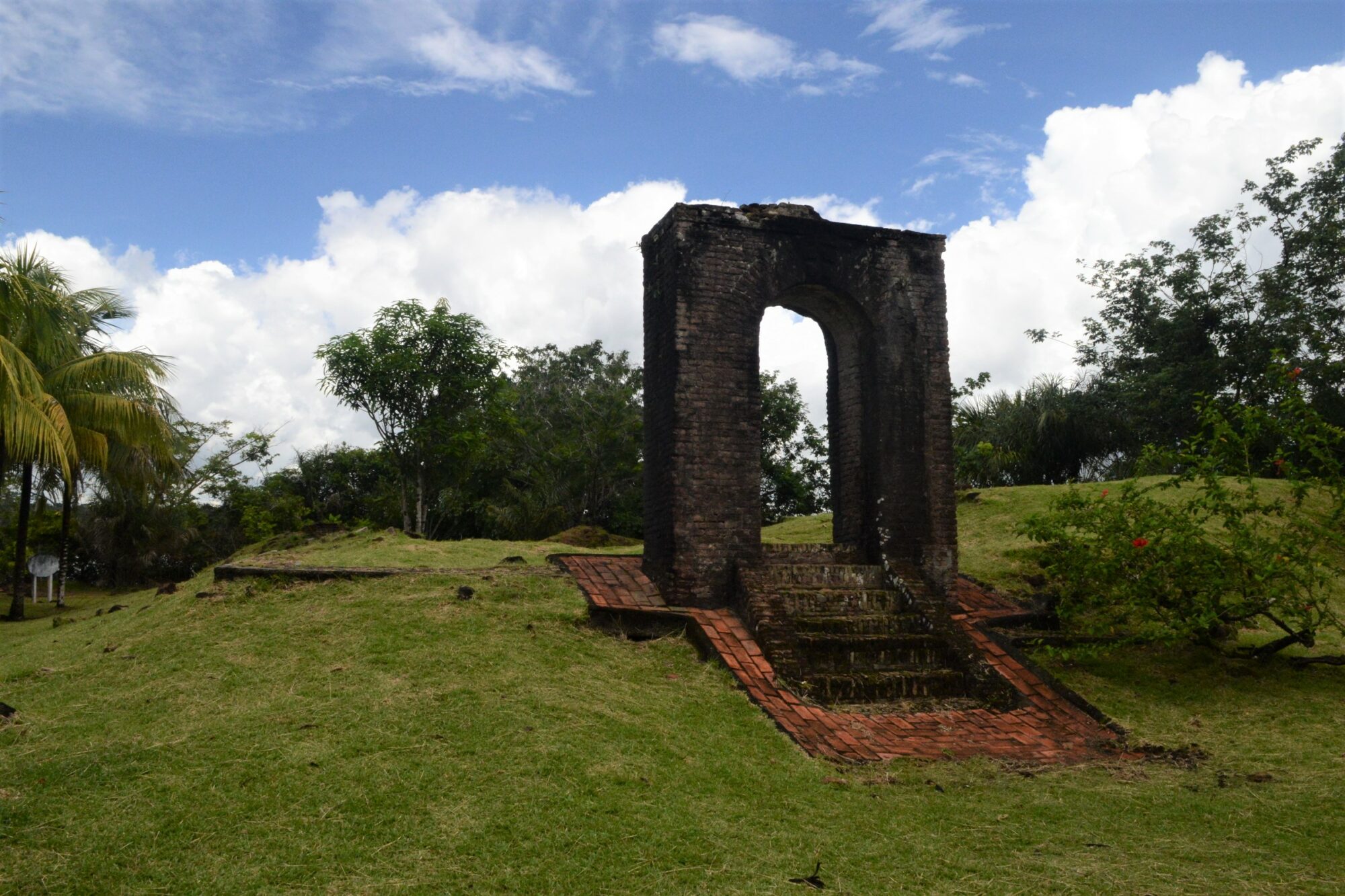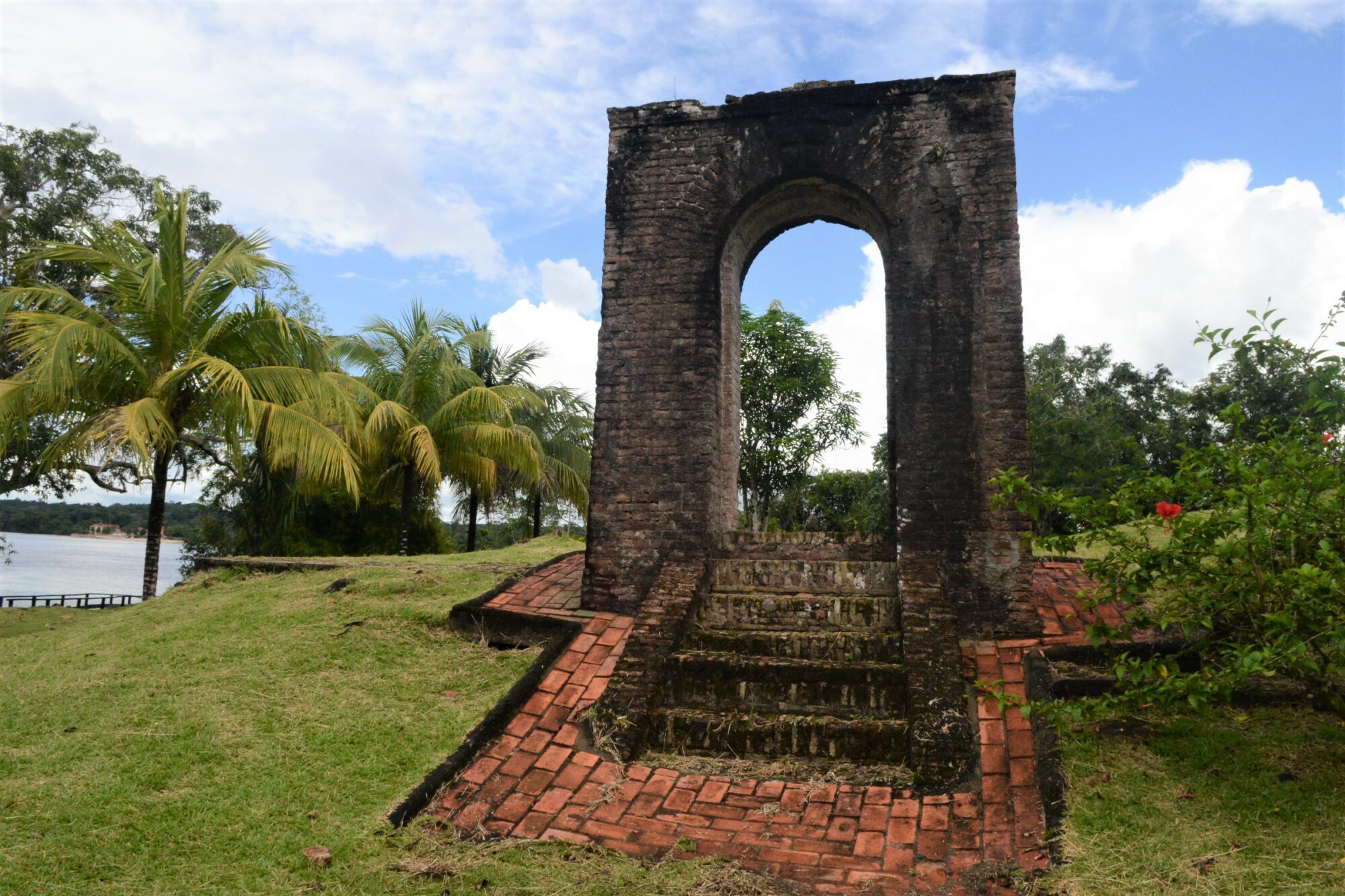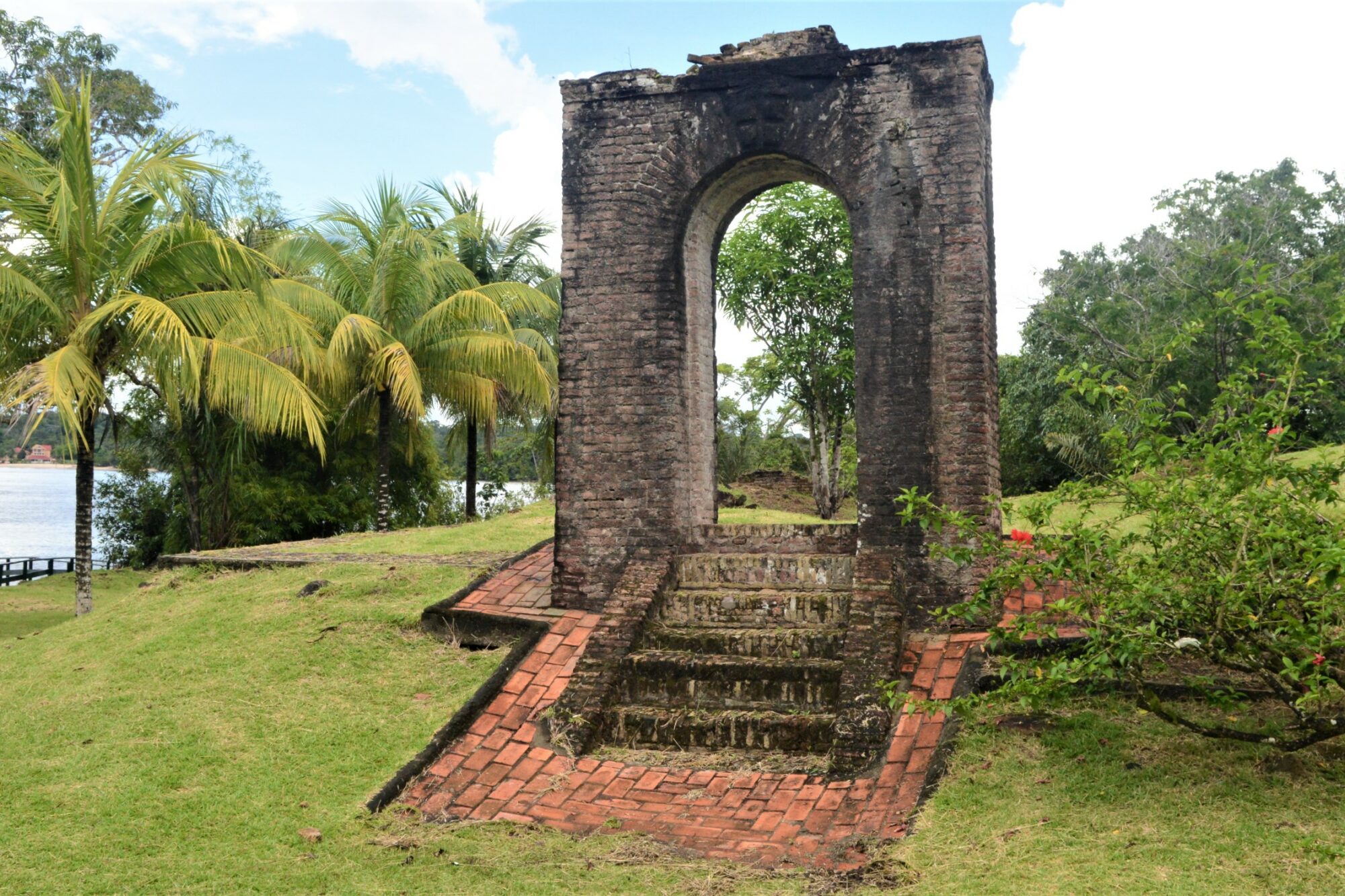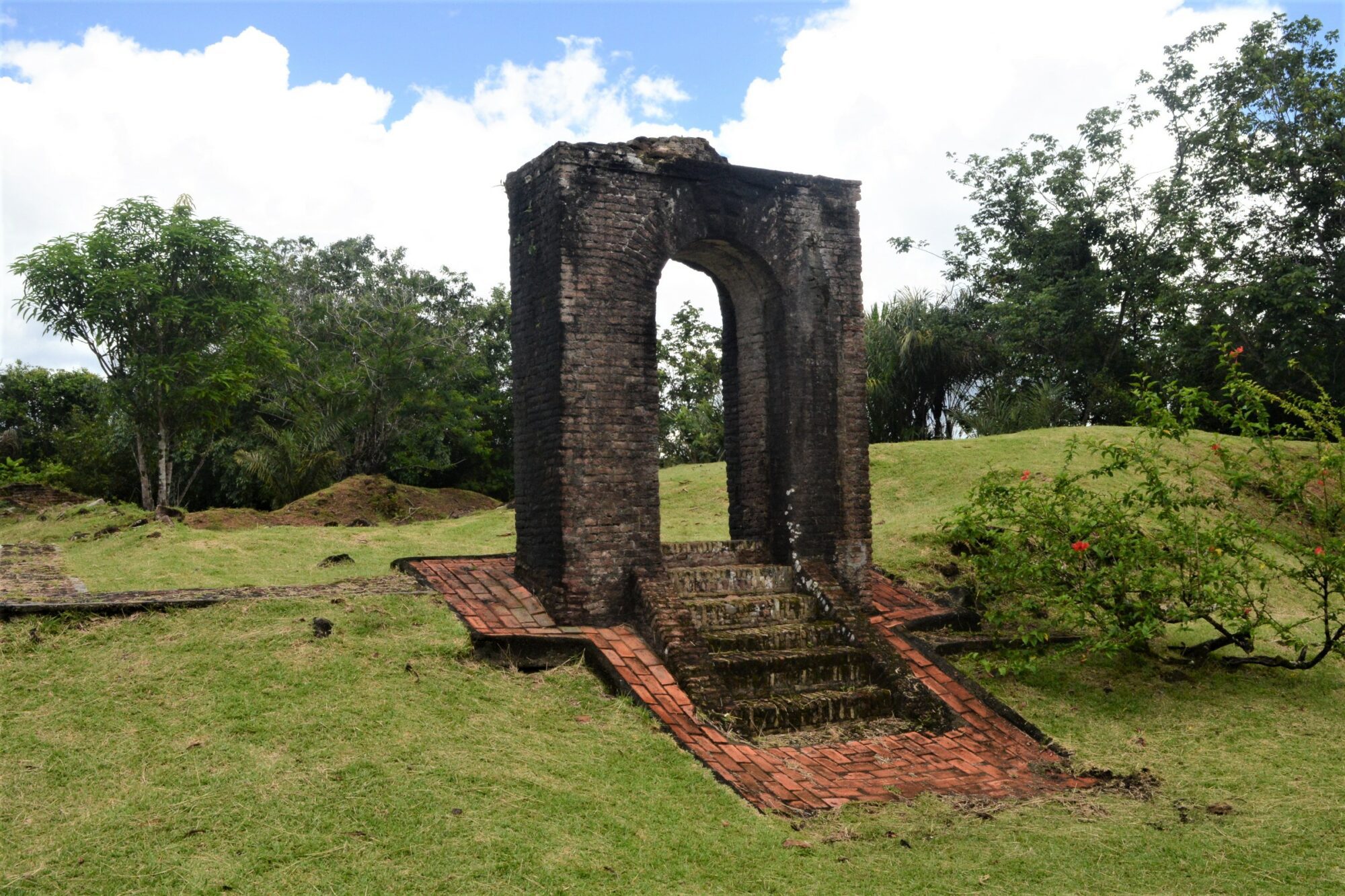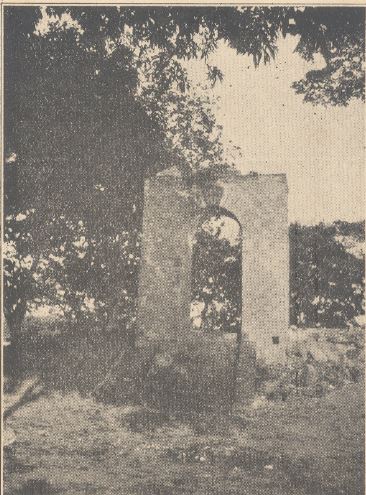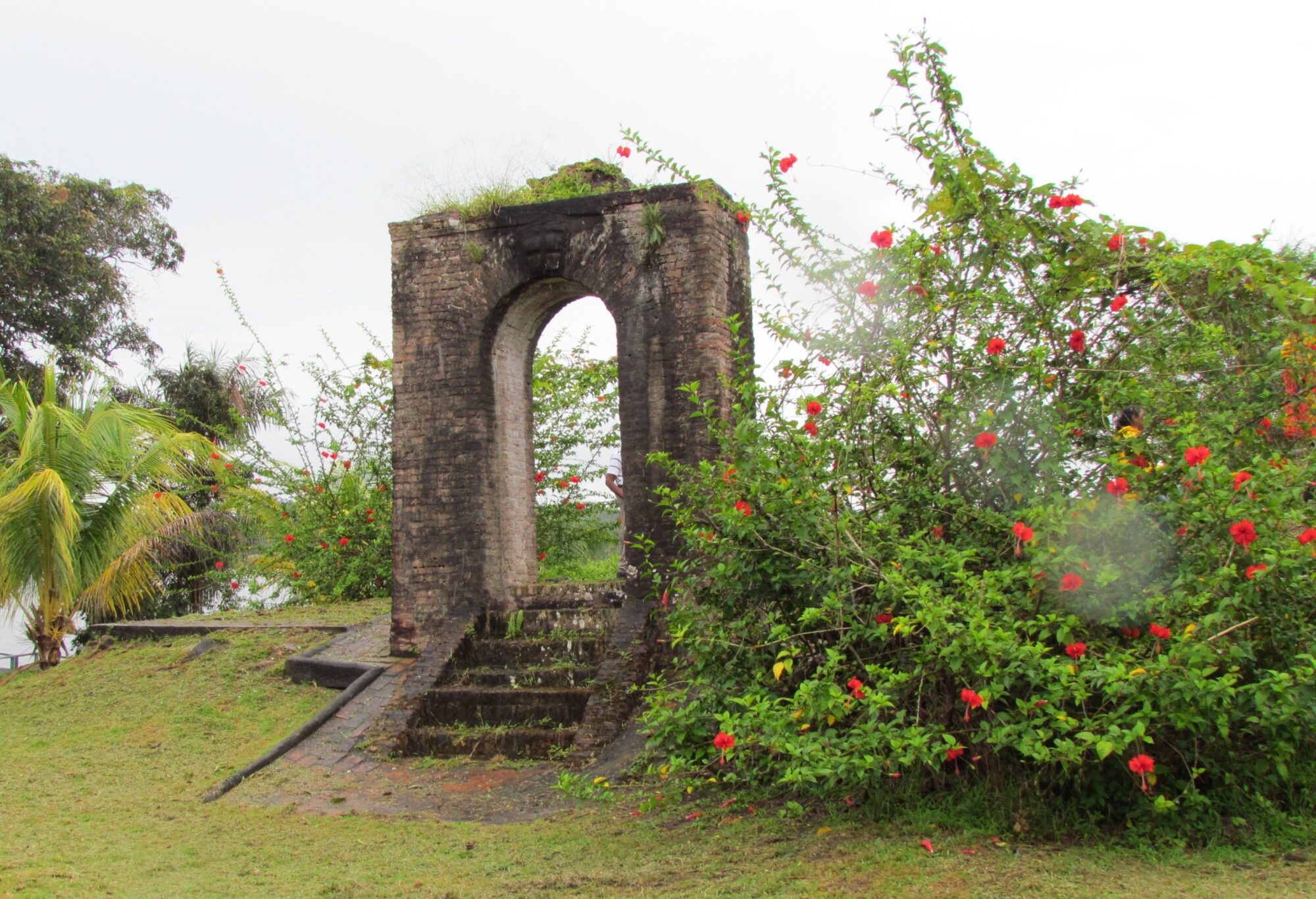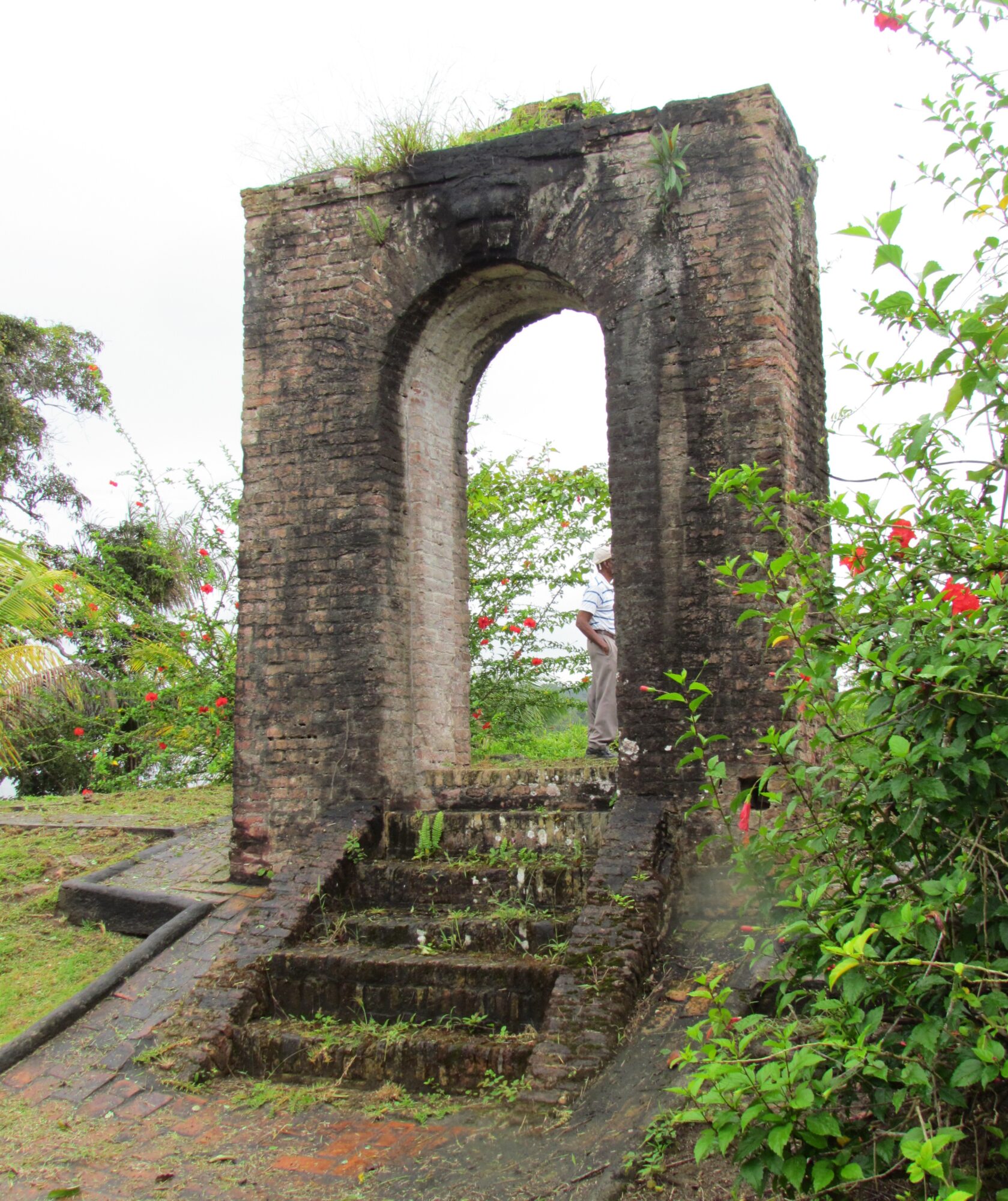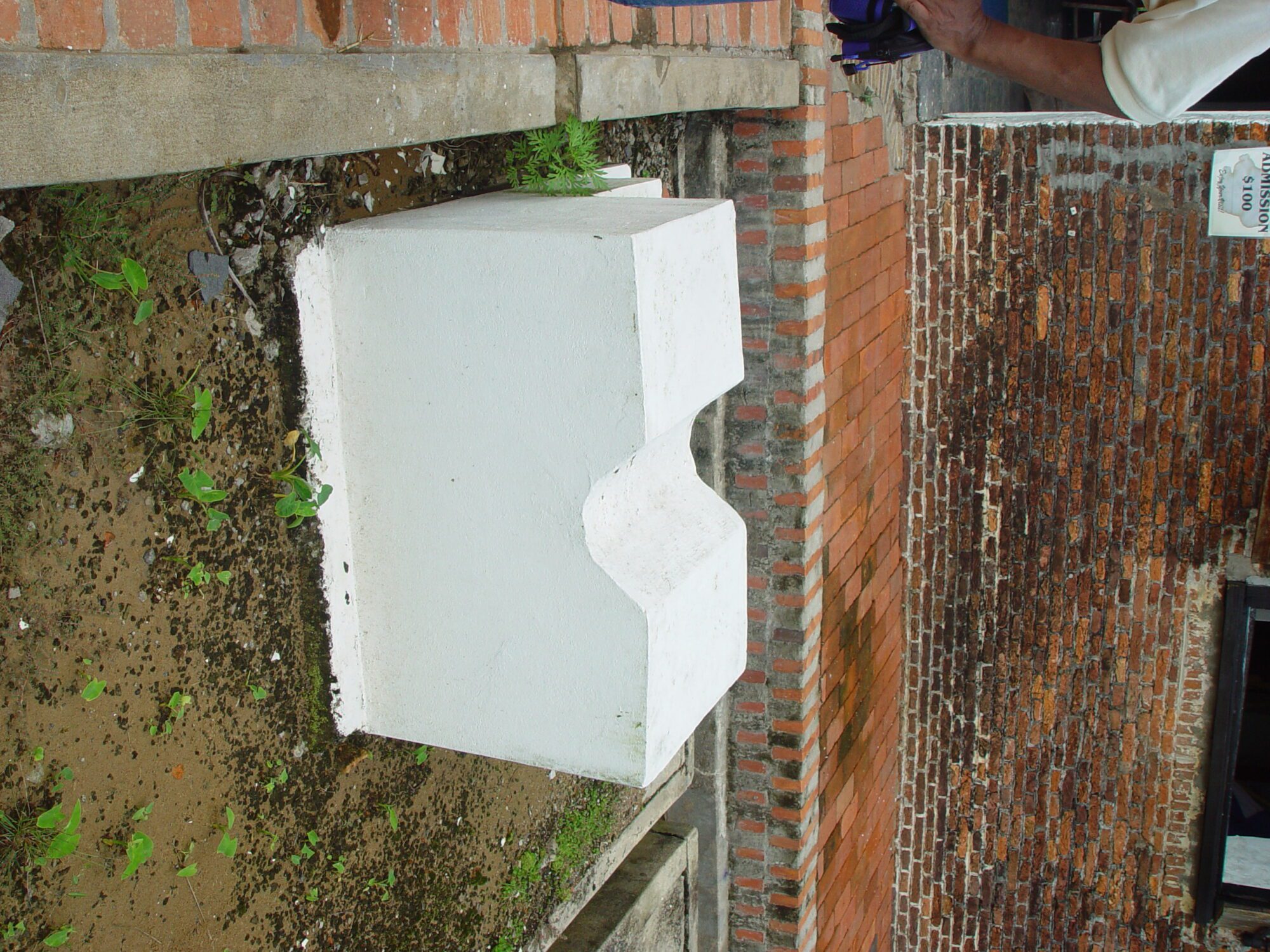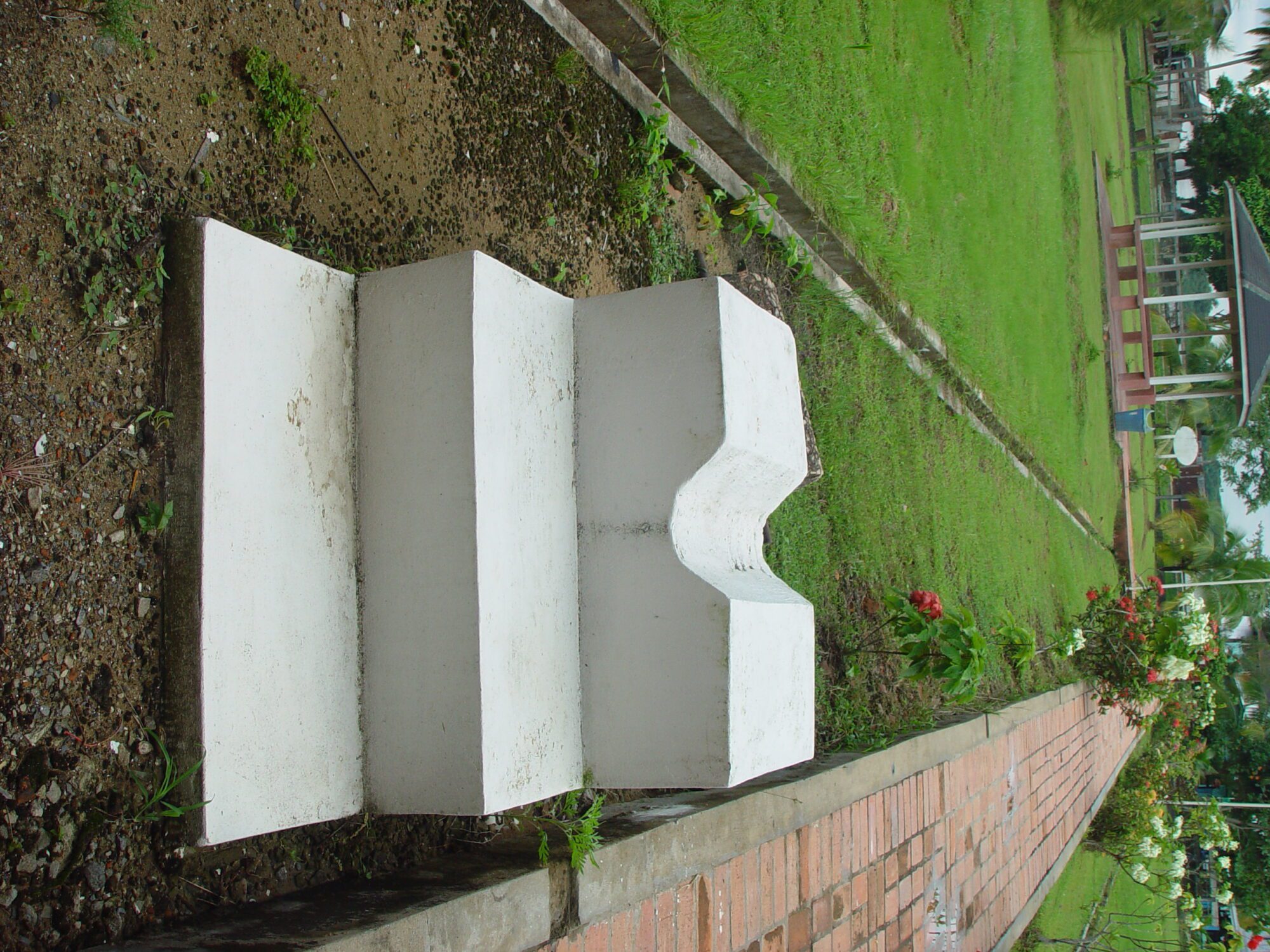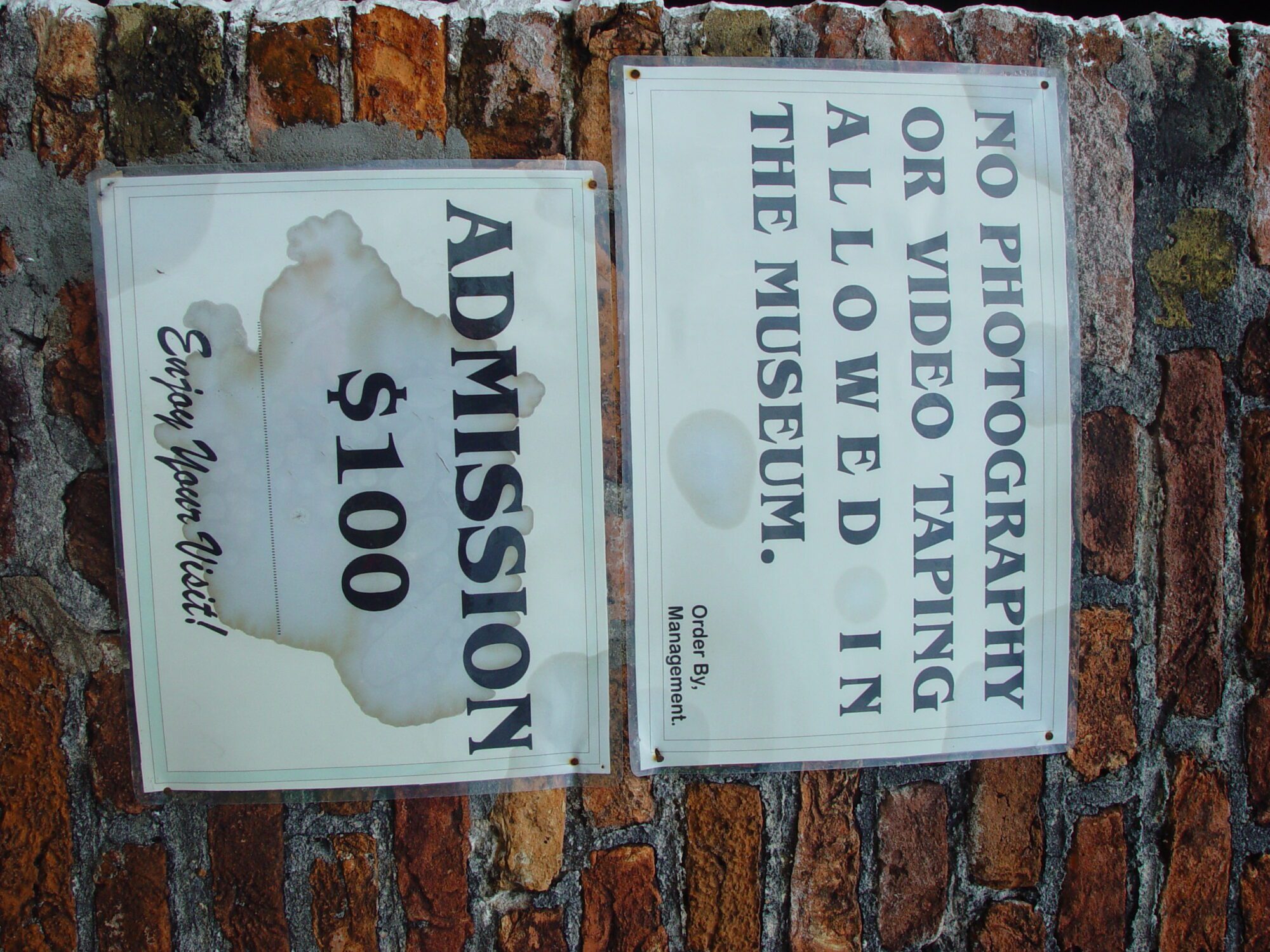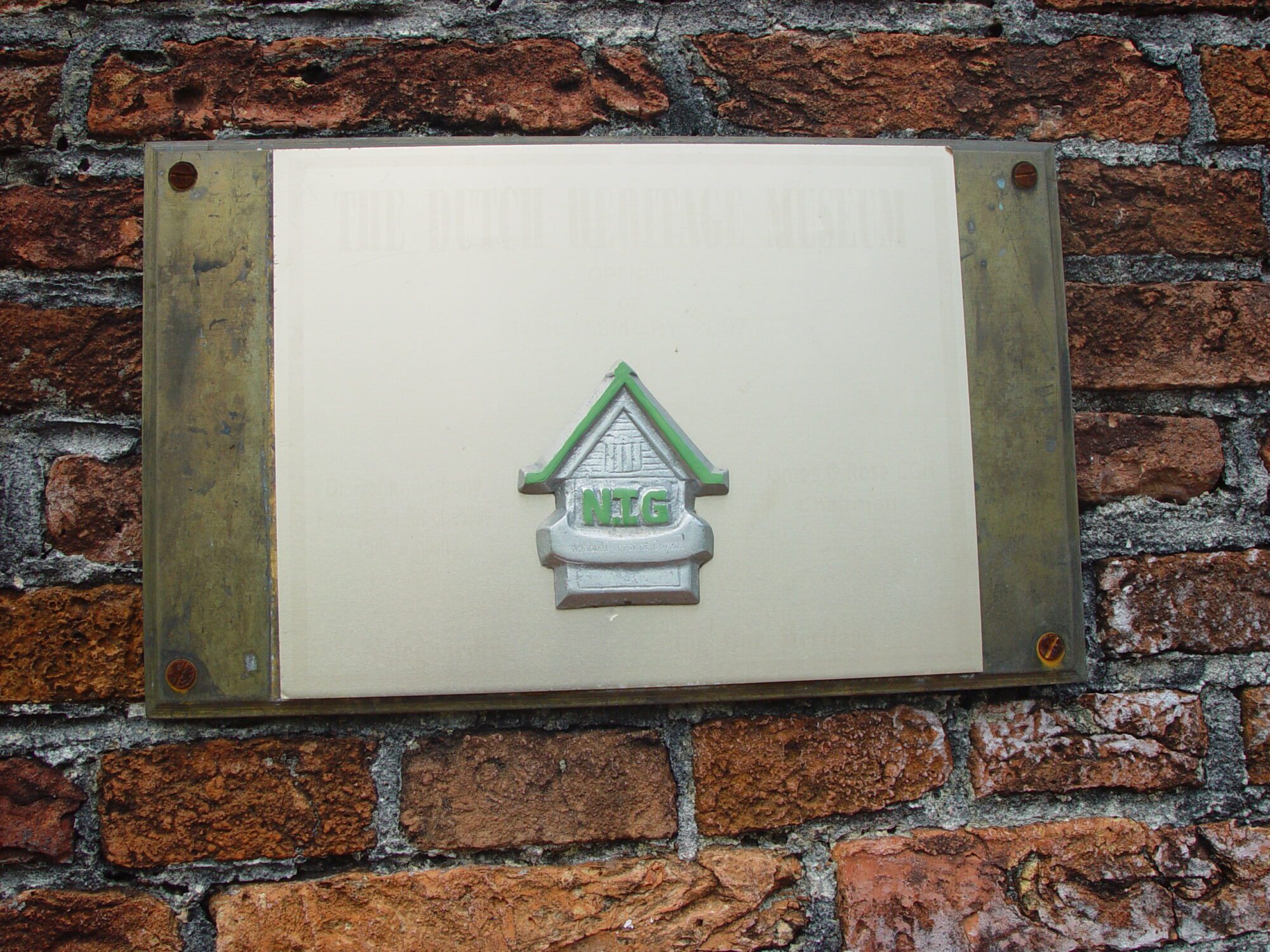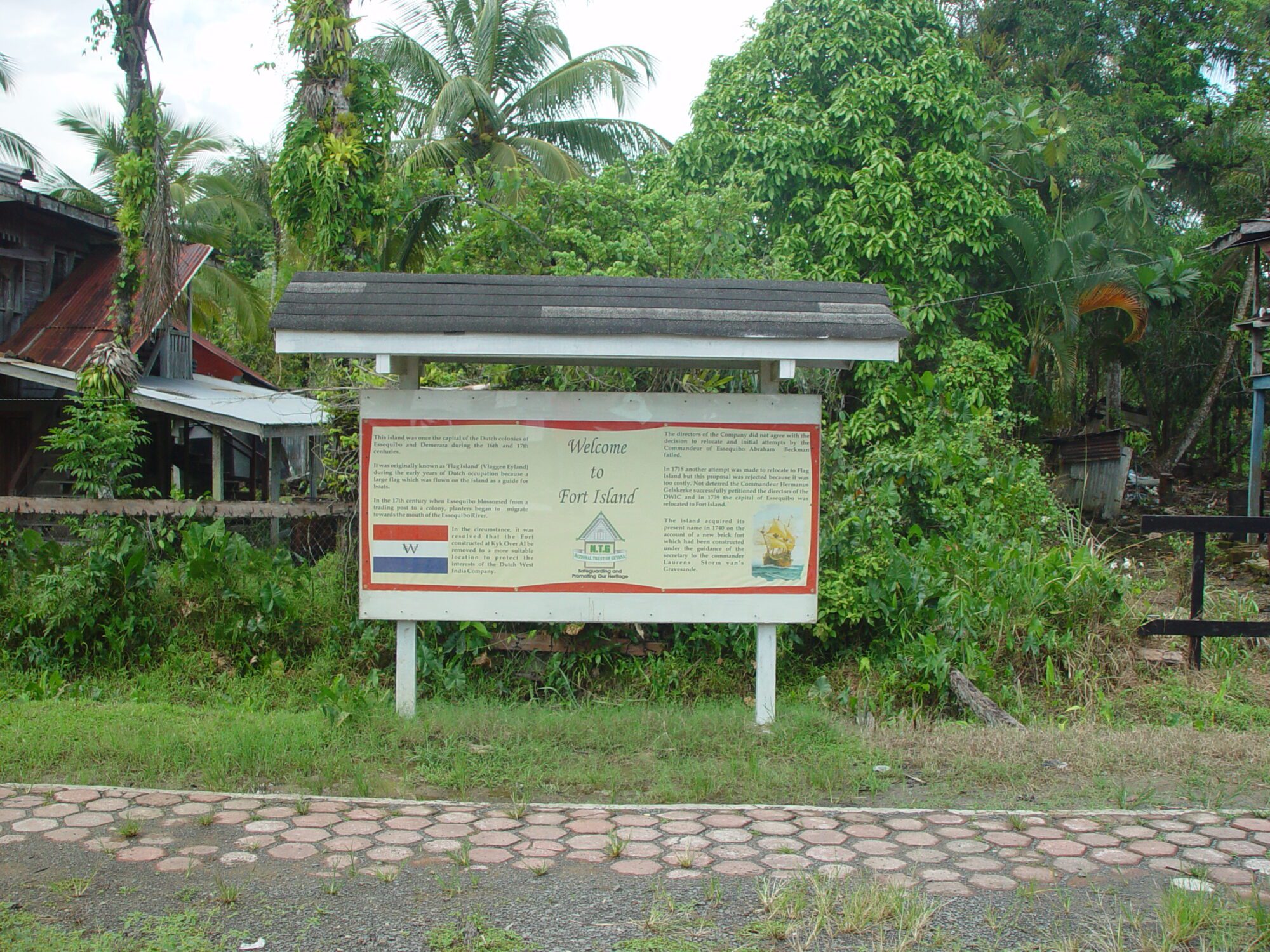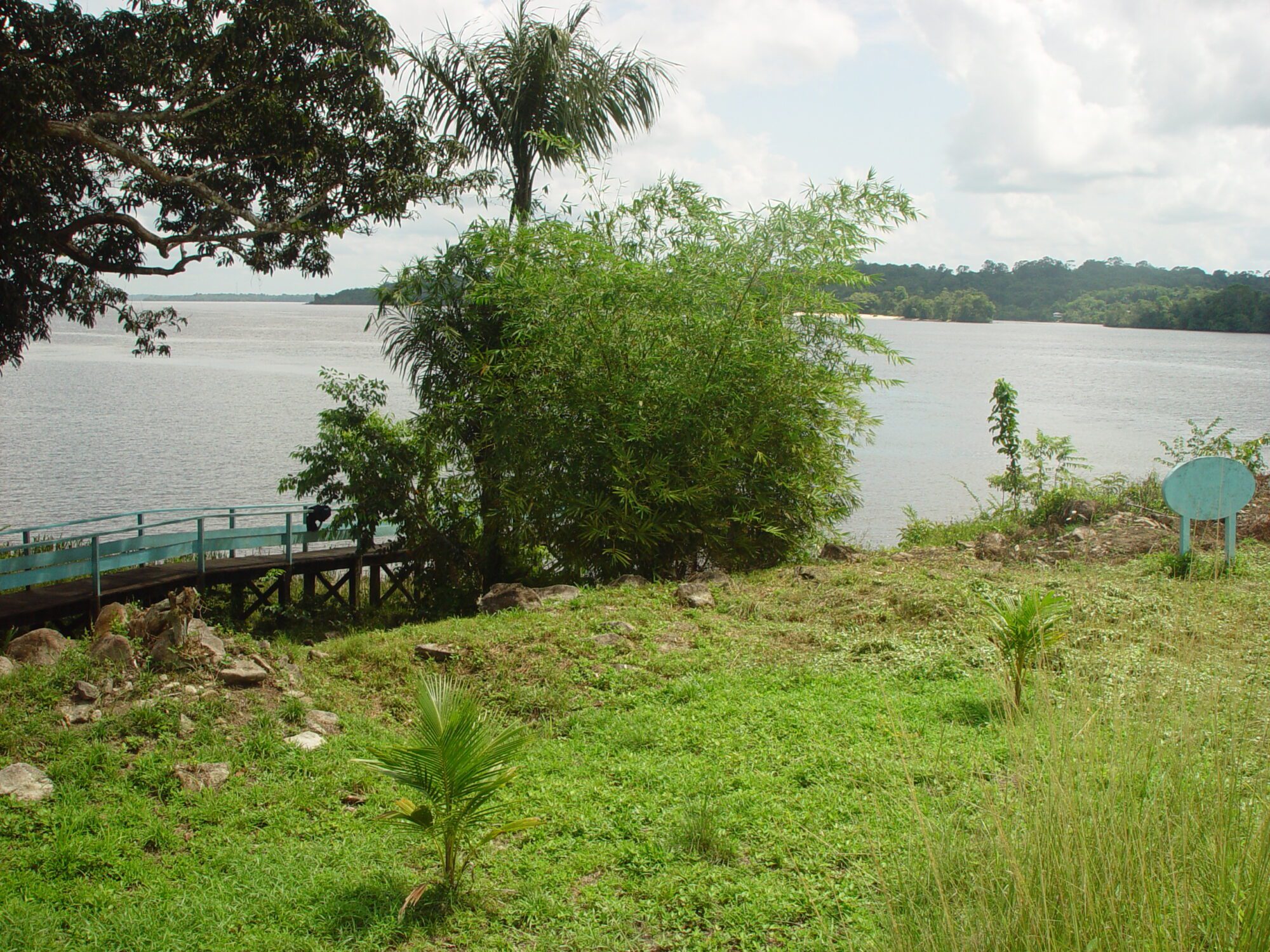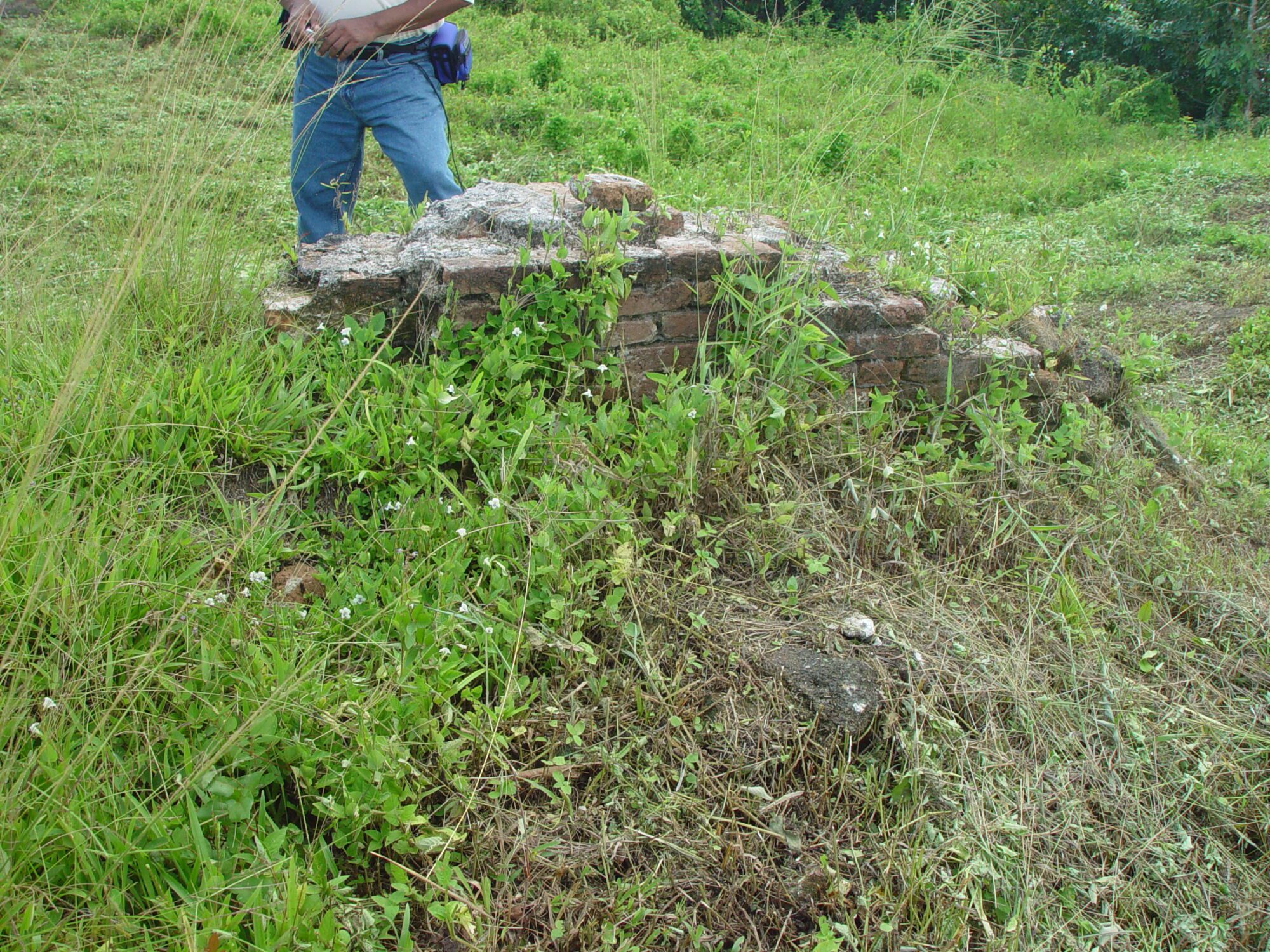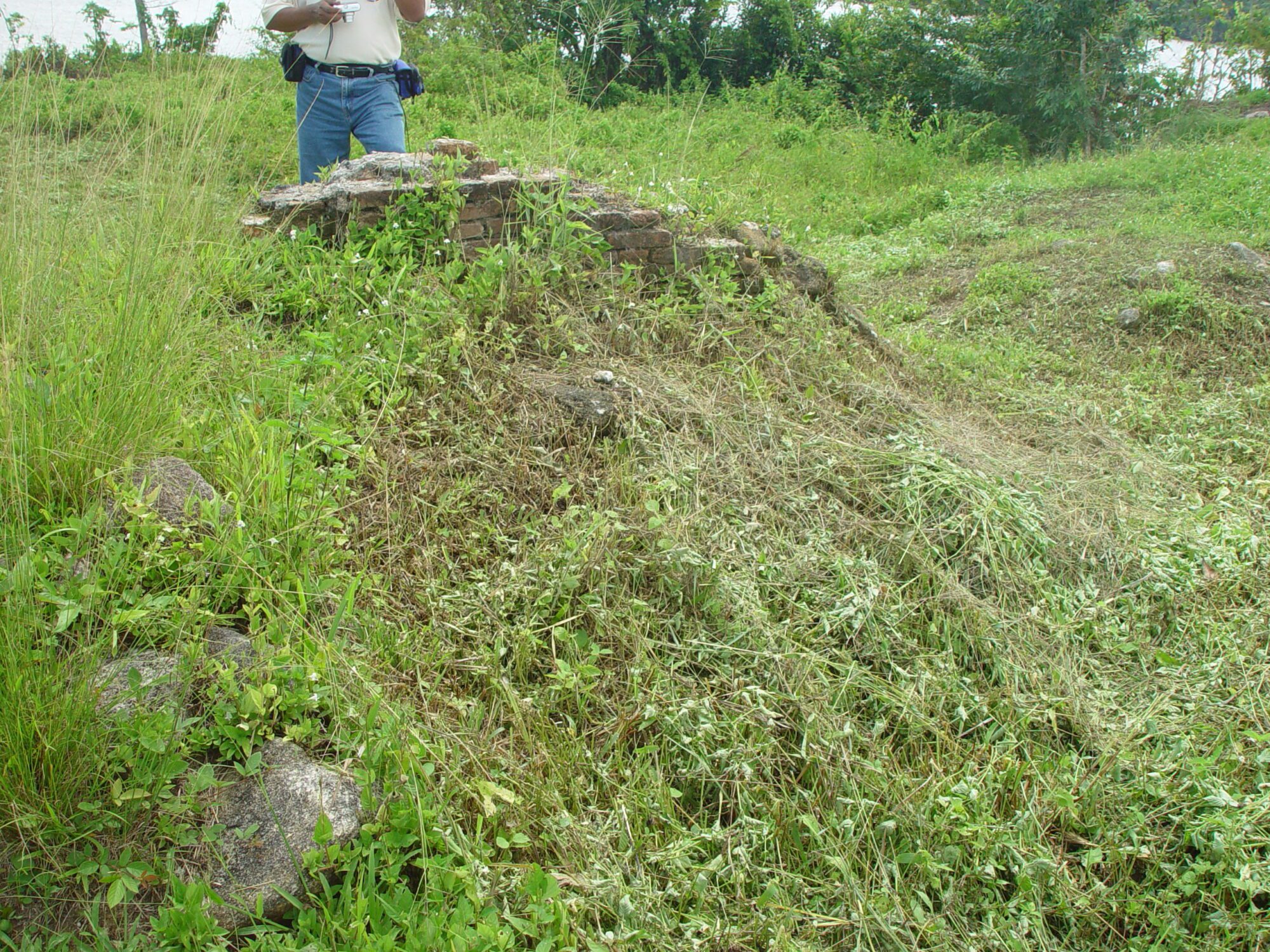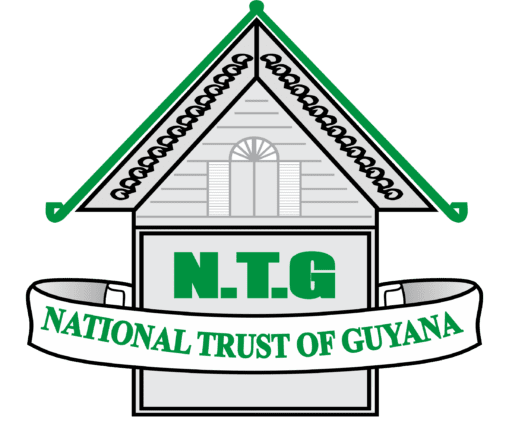Location: Mazaruni, Essequibo& Cuyuni Rivers, Essequibo
Classification: Historic Site (Military)
Period/ Year Built: Circa 1616
Historical Background / Description:
Fort Kyk-Over-Al is located on an island of the same name in the Mazaruni River, near its confluence with the Cuyuni River. The island, or more accurately the islet, is approximately 6,070 square metres (1.5 acres). It was the second Dutch trading outpost in Essequibo; the first was located in Pomeroon and was established in the late 1500s.
The first outpost at the location, many historians believe was built by either the Spanish or Portuguese. This structure was then replaced by the Dutch, circa 1616, with a permanent building and was outfitted with small guns. The outpost was named Fort ter Hoogen, after an influential Dutch businessman. The first Commandeur (1616-1624) of the Fort was Adrian Groenwegel, who aided in the construction of the outpost.
The fort’s name was later changed to ‘Kyk-Over-Al’ which means to ‘see over all’. By 1716, Fort Kyk- Over-Al was overcrowded and new buildings for colony officials were built at other locations nearby. One example is a building built at Cartabo Point which is located at the conjunction of the Mazaruni and Cuyuni Rivers. The structure called “Huis Naby” (House Near-by) accommodated the Commandeurs of the Fort along with other officials. By 1739, attempts were being made to move the outpost to Flag (Fort) Island. By 1748, the fort was abandoned completely and most of the buildings were demolished.
During the territorial boundary dispute between British Guiana and Venezuela in 1897, Fort Kyk-Over-Al was visited by experts to determine the original settlers of the colony. Excavated brick samples and the keystone from the arched doorway were studied. Archaeologist Mr. J.M. Baart concluded that the bricks used in the fort’s construction were not Spanish in origin therefore reconfirming the Dutch as the builder of the outpost. Fort Kyk-Over-Al was cleared once more in June,1910, exposing parts of its ramparts and parapets of stone with their embrasures. Relics such as cannon balls, clay tobacco pipes among other artefacts were found, some of which can be viewed at the Dutch Heritage Museum on Fort Island. Fort KykOver-Al was gazetted as a National Monument in 1999 and currently falls under the care of the National Trust of Guyana.
